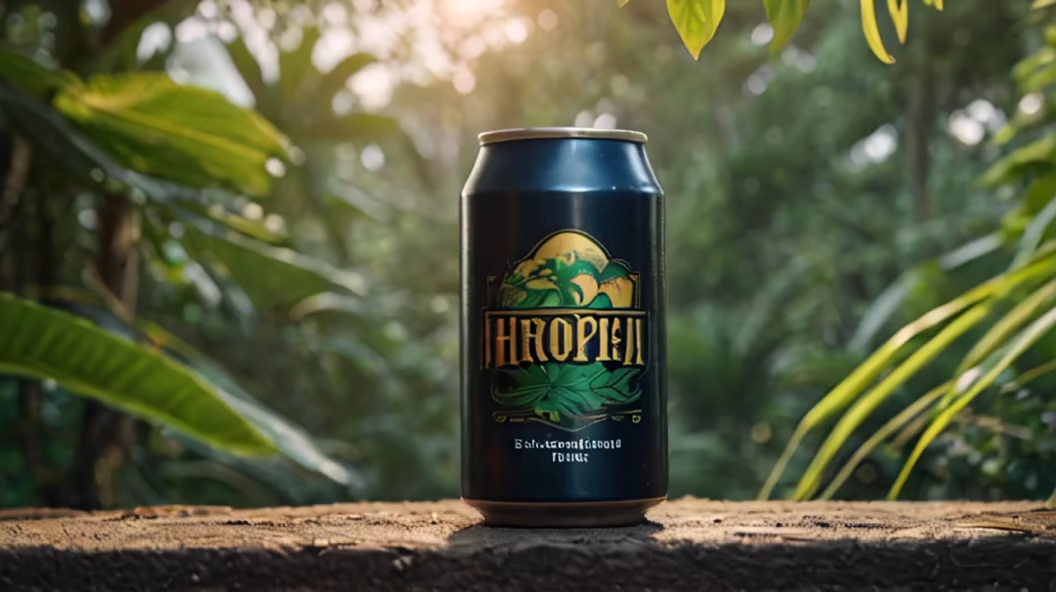Prompt: Generate an image of a cheerful fat man dancing energetically in the middle of a lively party. He should be dressed in colorful, casual clothing that accentuates his joyful movements. Capture the scene with vibrant lights, possibly disco balls reflecting around the room, and the expressions of amusement and delight on the faces of surrounding people, all set to a background of a dance floor buzzing with energy


Prompt: Creating a visual representation of an LSD (Lysergic acid diethylamide) trip can be challenging—trips vary greatly and involve a profound alteration of perception, including changes in visual, auditory, and sensory experiences. However, many reports of LSD trips include common themes such as enhanced colors, visual patterns, distortions, synesthesia (e.g., \"seeing\" sounds), and altered sense of time and space. Below are some guidelines on how to depict an LSD trip through visual art, using a combination of surrealism and abstraction. Note: This guide purely serves an illustrative purpose for creating artwork and does not endorse or promote the use of any substances. Conceptualize the Experience: Gather accounts or artistic representations of LSD trips to inform your design. Each person's experience can differ, so taking note of commonly reported phenomena is useful. Key concepts might include the surreal warping of reality, intense color enhancements, geometric patterns, and a sense of melding with the environment. Choose the Medium: Decide whether your piece will be digital or traditional. Digital media can offer more flexibility with effects and color manipulation, while traditional mediums like paint or mixed media might be preferred for their tactile qualities. Establish a Color Scheme: Psychedelic art often features vibrant, saturated colors. You may want to use a wide, contrasting color palette to convey the intensity and variety of visual stimuli. Depicting Visual Distortions: Objects may appear to melt, breathe, or have trailing images. Create warped perspectives, bending straight lines, and morphing shapes to simulate a fluid, dynamic environment. Incorporate Patterns and Fractals: Use intricate patterns and repeating fractal-like designs to represent the complex visual hallucinations often experienced. Add Imagery Suggesting Synesthesia: Depicting one sensory experience through another (e.g., visualizing music as waves or patterns) can capture the synesthetic aspect of an LSD trip. Capture Altered Perception of Time and Space: Create a scene where spatial dimensions seem distorted, objects have no clear boundary, and time seems to have a visual representation, perhaps through repeated elements or clock imagery. Emphasize the Mystical or Profound: LSD experiences often contain elements of the profound or mystical. Consider including symbols or imagery that evoke a sense of wonder or transcendence.
Style: Low Poly
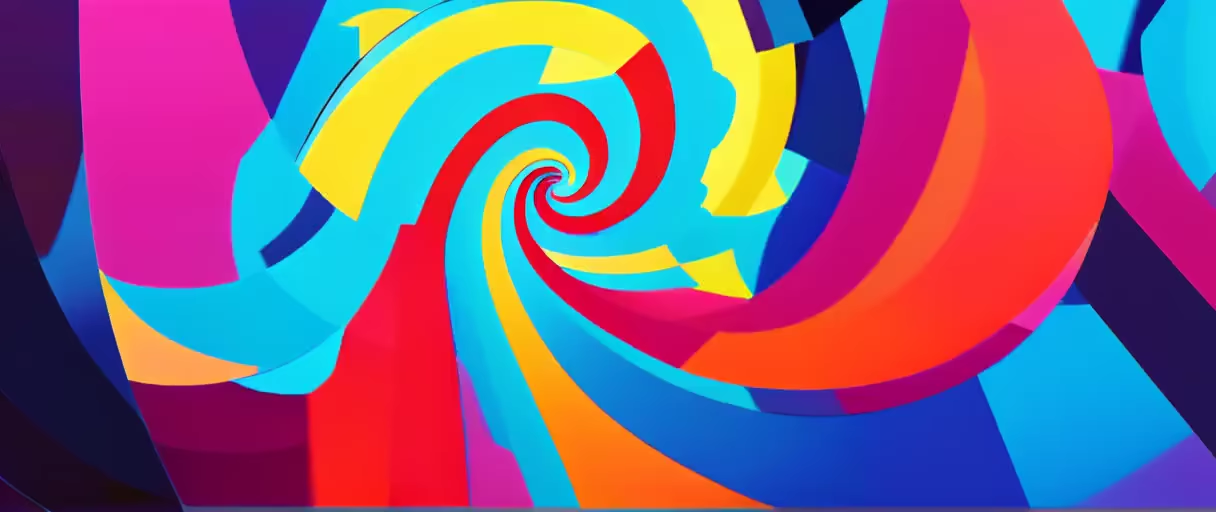
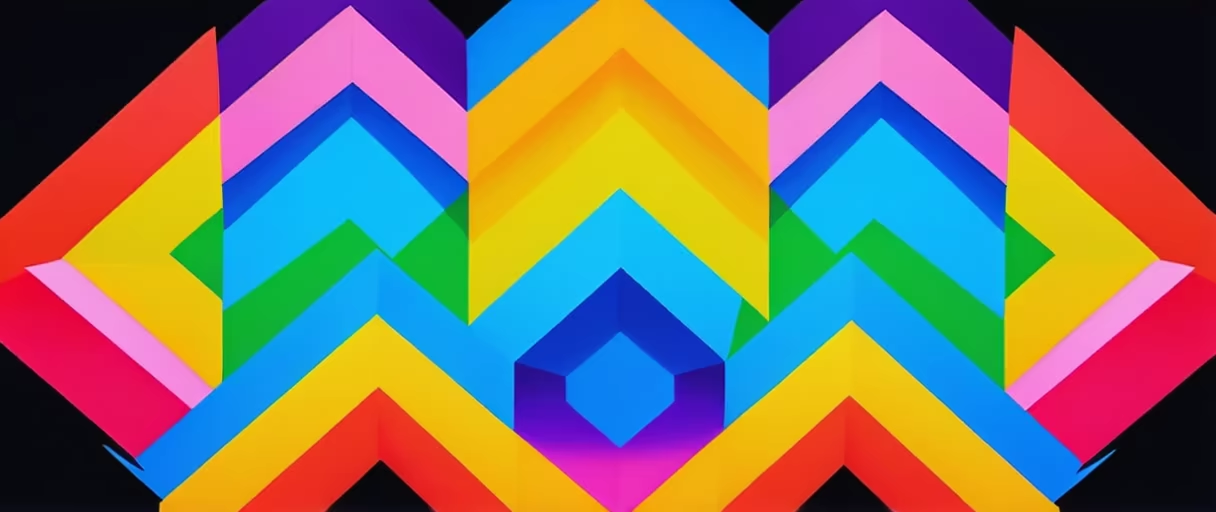
Prompt: Creating a visual representation of an LSD (Lysergic acid diethylamide) trip can be challenging—trips vary greatly and involve a profound alteration of perception, including changes in visual, auditory, and sensory experiences. However, many reports of LSD trips include common themes such as enhanced colors, visual patterns, distortions, synesthesia (e.g., \"seeing\" sounds), and altered sense of time and space. Below are some guidelines on how to depict an LSD trip through visual art, using a combination of surrealism and abstraction. Note: This guide purely serves an illustrative purpose for creating artwork and does not endorse or promote the use of any substances. Conceptualize the Experience: Gather accounts or artistic representations of LSD trips to inform your design. Each person's experience can differ, so taking note of commonly reported phenomena is useful. Key concepts might include the surreal warping of reality, intense color enhancements, geometric patterns, and a sense of melding with the environment. Choose the Medium: Decide whether your piece will be digital or traditional. Digital media can offer more flexibility with effects and color manipulation, while traditional mediums like paint or mixed media might be preferred for their tactile qualities. Establish a Color Scheme: Psychedelic art often features vibrant, saturated colors. You may want to use a wide, contrasting color palette to convey the intensity and variety of visual stimuli. Depicting Visual Distortions: Objects may appear to melt, breathe, or have trailing images. Create warped perspectives, bending straight lines, and morphing shapes to simulate a fluid, dynamic environment. Incorporate Patterns and Fractals: Use intricate patterns and repeating fractal-like designs to represent the complex visual hallucinations often experienced. Add Imagery Suggesting Synesthesia: Depicting one sensory experience through another (e.g., visualizing music as waves or patterns) can capture the synesthetic aspect of an LSD trip. Capture Altered Perception of Time and Space: Create a scene where spatial dimensions seem distorted, objects have no clear boundary, and time seems to have a visual representation, perhaps through repeated elements or clock imagery. Emphasize the Mystical or Profound: LSD experiences often contain elements of the profound or mystical. Consider including symbols or imagery that evoke a sense of wonder or transcendence.
Style: Watercolor

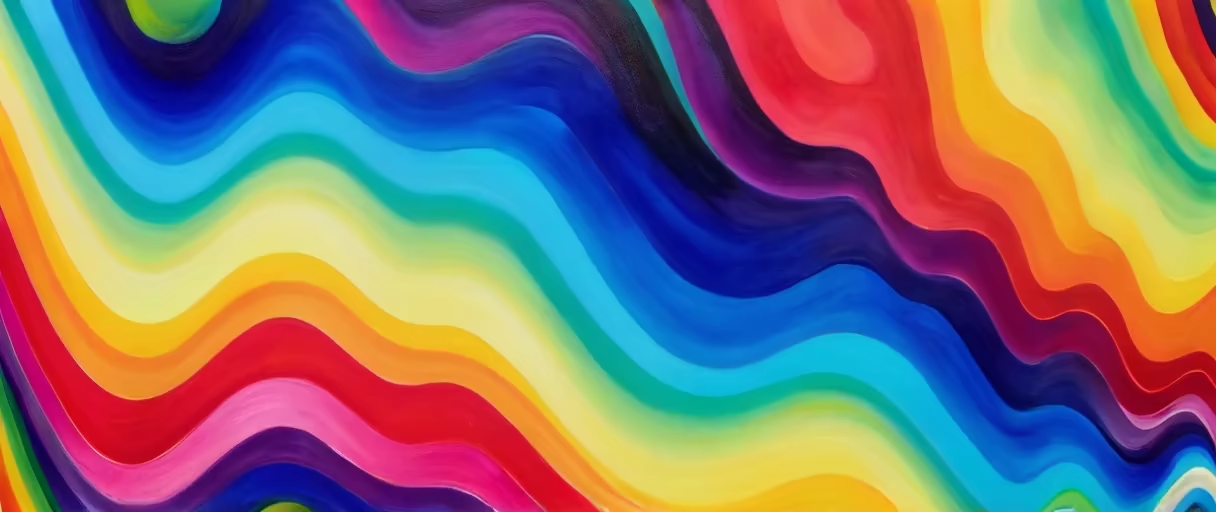
Prompt: Creating a photorealistic image that captures the essence of \"Zen\" can be a rewarding artistic endeavor. Zen, which is deeply rooted in Buddhist philosophy, emphasizes simplicity, naturalness, and a sense of tranquility. To visualize this concept, you would typically want to focus on natural elements, minimalist design, and a peaceful ambiance. Here is a step-by-step guide to help you create a photorealistic Zen-themed image: Choose Your Main Subject: Consider subjects that evoke calmness and serenity, such as a Zen garden, a simple still life with a bonsai tree, or smooth stones in sand. Select a Color Palette: Stick to muted, earthy tones like soft greens, warm browns, and grays to reinforce a natural and calming aesthetic. Plan the Composition: Aim for a balanced and harmonious composition. Use the rule of thirds to position key elements. Leave plenty of negative space to enhance the Zen concept of ma (negative space), which emphasizes the things that aren't there as much as the things that are. Set the Lighting: Soft, diffused lighting can help to create a serene mood. Consider the time of day that best reflects the peace of Zen, like early morning or dusk. Incorporate Texture: Detailing with texture such as raked sand patterns or the bark of a bonsai tree will add to the realism. Add Simplistic Elements: Elements like a single leaf or pebble can symbolize the Zen principle of kanso (simplicity). Focus on Detail and Realism: Pay attention to small details like shadows, reflections, and textures to enhance the photorealistic quality. Post-Processing: Use photo editing software to fine-tune colors, contrast, and saturation, and to ensure a natural look is maintained. Review and Reflect: Look at the image as a whole and consider if it truly conveys a sense of Zen. It should inspire a viewer to feel more mindful, present, and at peace.
Style: Photographic


Prompt: Creating a photorealistic image that captures the essence of \"Zen\" can be a rewarding artistic endeavor. Zen, which is deeply rooted in Buddhist philosophy, emphasizes simplicity, naturalness, and a sense of tranquility. To visualize this concept, you would typically want to focus on natural elements, minimalist design, and a peaceful ambiance. Here is a step-by-step guide to help you create a photorealistic Zen-themed image: Choose Your Main Subject: Consider subjects that evoke calmness and serenity, such as a Zen garden, a simple still life with a bonsai tree, or smooth stones in sand. Select a Color Palette: Stick to muted, earthy tones like soft greens, warm browns, and grays to reinforce a natural and calming aesthetic. Plan the Composition: Aim for a balanced and harmonious composition. Use the rule of thirds to position key elements. Leave plenty of negative space to enhance the Zen concept of ma (negative space), which emphasizes the things that aren't there as much as the things that are. Set the Lighting: Soft, diffused lighting can help to create a serene mood. Consider the time of day that best reflects the peace of Zen, like early morning or dusk. Incorporate Texture: Detailing with texture such as raked sand patterns or the bark of a bonsai tree will add to the realism. Add Simplistic Elements: Elements like a single leaf or pebble can symbolize the Zen principle of kanso (simplicity). Focus on Detail and Realism: Pay attention to small details like shadows, reflections, and textures to enhance the photorealistic quality. Post-Processing: Use photo editing software to fine-tune colors, contrast, and saturation, and to ensure a natural look is maintained. Review and Reflect: Look at the image as a whole and consider if it truly conveys a sense of Zen. It should inspire a viewer to feel more mindful, present, and at peace.
Style: Photographic


Prompt: Creating a photorealistic image that captures the essence of \"Zen\" can be a rewarding artistic endeavor. Zen, which is deeply rooted in Buddhist philosophy, emphasizes simplicity, naturalness, and a sense of tranquility. To visualize this concept, you would typically want to focus on natural elements, minimalist design, and a peaceful ambiance. Here is a step-by-step guide to help you create a photorealistic Zen-themed image: Choose Your Main Subject: Consider subjects that evoke calmness and serenity, such as a Zen garden, a simple still life with a bonsai tree, or smooth stones in sand. Select a Color Palette: Stick to muted, earthy tones like soft greens, warm browns, and grays to reinforce a natural and calming aesthetic. Plan the Composition: Aim for a balanced and harmonious composition. Use the rule of thirds to position key elements. Leave plenty of negative space to enhance the Zen concept of ma (negative space), which emphasizes the things that aren't there as much as the things that are. Set the Lighting: Soft, diffused lighting can help to create a serene mood. Consider the time of day that best reflects the peace of Zen, like early morning or dusk. Incorporate Texture: Detailing with texture such as raked sand patterns or the bark of a bonsai tree will add to the realism. Add Simplistic Elements: Elements like a single leaf or pebble can symbolize the Zen principle of kanso (simplicity). Focus on Detail and Realism: Pay attention to small details like shadows, reflections, and textures to enhance the photorealistic quality. Post-Processing: Use photo editing software to fine-tune colors, contrast, and saturation, and to ensure a natural look is maintained. Review and Reflect: Look at the image as a whole and consider if it truly conveys a sense of Zen. It should inspire a viewer to feel more mindful, present, and at peace.


Prompt: To visualize the abstract concepts of \"chain of thought\" and \"chain of thought self-consistency\" in reasoning within large language models (LLMs), we need to create a figure that will effectively communicate these ideas in a scientific context. Here's how you can create such a visual representation: Task Identification: Chain of thought: depict the sequential reasoning process within LLMs. Self-consistency: illustrate the importance of coherence and reliability in this process. Connection between ideas: demonstrate how each link in the chain relates to the overall reasoning. Information Synthesis: For the chain of thought: Use interconnected nodes or thought bubbles to show progression. Sequential numbering or arrows can depict the flow of reasoning. For self-consistency: Repeating patterns or colors can symbolize consistency. Overlapping layers or links can show the reinforcement of ideas. Instruction Formulation: Begin with a horizontal or slightly curved line to set the stage for your \"chain\". Add several evenly spaced nodes (circles or ovals) along the line to represent individual thoughts or steps in the reasoning process. Connect these nodes with arrows to indicate the direction of the thought process. Arrows should point from one node to the next, creating a visual flow. Inside each node, provide a brief label or icon that encapsulates the essence of the thought step (e.g., \"Data Input\", \"Hypothesis Formation\", \"Evidence Evaluation\", etc.). To emphasize self-consistency, you might add a secondary line that loops back from the final node to an earlier one, suggesting a feedback mechanism or a re-evaluation process that ensures consistency. Use a consistent color scheme to represent connectivity and a different, perhaps more vibrant color to highlight self-consistency. Annotate the figure with a brief legend or caption to clarify the significance of colors, arrows, and loops for readers less familiar with the concept. Clarity and Conciseness: Use clear, concise labels for the nodes. Keep the design simple to avoid clutter. Use plain language in the legend and captions. Ensure arrows and loops are clearly visible and distinct.
Style: Sticker


Prompt: To create a visual representation of a \"winter forest,\" we'll consider conveying the essence of a forest during the wintertime. This entails depicting elements such as bare trees, snow, cool color tones, and perhaps wildlife or signs of life that are commonly associated with a forest in the winter season. Here's how you can create this visual representation: Overall Layout: Decide on the perspective of your visual – it could be a landscape view, a close-up of a part of the forest, or an abstract representation. Sketch or outline the basic shapes and areas where you will place the main elements such as trees, snowdrifts, and the sky. Trees: Draw or use images of trees with bare branches to represent deciduous trees in their dormant state. For evergreen trees, indicate their shapes with fuller, triangular forms to contrast with the bare branches. Use white or light gray to add touches of snow on the branches. Snow: Depict snow on the ground with curving lines to represent undulating snowdrifts. Use a bright white or slightly blue-tinted white for the snow to convey chilliness. Consider adding subtle shadows to the snow to create depth, using light blue or gray. Color Palette: Utilize cool tones such as blues, whites, and grays to convey the cold temperature. If there's a sunrise or sunset, you may introduce warmer hues like pink or orange in the sky, but keep it subtle. Wildlife and Details: If you want to showcase life in the winter forest, consider adding animals such as deer, rabbits, or birds. You can also add finer details like animal tracks in the snow, icicles hanging from branches, or a frozen stream. Atmosphere: Create a sense of atmosphere by adding light fog or mist to illustrate cold winter air, using light grey or soft white washes. To depict a time of day, consider the position and color of light; soft morning light, the gray overcast of midday, or the golden hues of a setting sun. Finishing Touches: Review your visual to ensure a balanced composition, and add any final details or adjustments to enhance realism or abstraction, depending on your style. Consider adding a slight vignette effect or framing with tree branches at the edges to draw focus into the center of the scene.
Style: Origami


Prompt: To create a visual representation of a \"winter forest,\" we'll consider conveying the essence of a forest during the wintertime. This entails depicting elements such as bare trees, snow, cool color tones, and perhaps wildlife or signs of life that are commonly associated with a forest in the winter season. Here's how you can create this visual representation: Overall Layout: Decide on the perspective of your visual – it could be a landscape view, a close-up of a part of the forest, or an abstract representation. Sketch or outline the basic shapes and areas where you will place the main elements such as trees, snowdrifts, and the sky. Trees: Draw or use images of trees with bare branches to represent deciduous trees in their dormant state. For evergreen trees, indicate their shapes with fuller, triangular forms to contrast with the bare branches. Use white or light gray to add touches of snow on the branches. Snow: Depict snow on the ground with curving lines to represent undulating snowdrifts. Use a bright white or slightly blue-tinted white for the snow to convey chilliness. Consider adding subtle shadows to the snow to create depth, using light blue or gray. Color Palette: Utilize cool tones such as blues, whites, and grays to convey the cold temperature. If there's a sunrise or sunset, you may introduce warmer hues like pink or orange in the sky, but keep it subtle. Wildlife and Details: If you want to showcase life in the winter forest, consider adding animals such as deer, rabbits, or birds. You can also add finer details like animal tracks in the snow, icicles hanging from branches, or a frozen stream. Atmosphere: Create a sense of atmosphere by adding light fog or mist to illustrate cold winter air, using light grey or soft white washes. To depict a time of day, consider the position and color of light; soft morning light, the gray overcast of midday, or the golden hues of a setting sun. Finishing Touches: Review your visual to ensure a balanced composition, and add any final details or adjustments to enhance realism or abstraction, depending on your style. Consider adding a slight vignette effect or framing with tree branches at the edges to draw focus into the center of the scene.
Style: Tile Texture


Prompt: To create a visual representation of a \"winter forest,\" we'll consider conveying the essence of a forest during the wintertime. This entails depicting elements such as bare trees, snow, cool color tones, and perhaps wildlife or signs of life that are commonly associated with a forest in the winter season. Here's how you can create this visual representation: Overall Layout: Decide on the perspective of your visual – it could be a landscape view, a close-up of a part of the forest, or an abstract representation. Sketch or outline the basic shapes and areas where you will place the main elements such as trees, snowdrifts, and the sky. Trees: Draw or use images of trees with bare branches to represent deciduous trees in their dormant state. For evergreen trees, indicate their shapes with fuller, triangular forms to contrast with the bare branches. Use white or light gray to add touches of snow on the branches. Snow: Depict snow on the ground with curving lines to represent undulating snowdrifts. Use a bright white or slightly blue-tinted white for the snow to convey chilliness. Consider adding subtle shadows to the snow to create depth, using light blue or gray. Color Palette: Utilize cool tones such as blues, whites, and grays to convey the cold temperature. If there's a sunrise or sunset, you may introduce warmer hues like pink or orange in the sky, but keep it subtle. Wildlife and Details: If you want to showcase life in the winter forest, consider adding animals such as deer, rabbits, or birds. You can also add finer details like animal tracks in the snow, icicles hanging from branches, or a frozen stream. Atmosphere: Create a sense of atmosphere by adding light fog or mist to illustrate cold winter air, using light grey or soft white washes. To depict a time of day, consider the position and color of light; soft morning light, the gray overcast of midday, or the golden hues of a setting sun. Finishing Touches: Review your visual to ensure a balanced composition, and add any final details or adjustments to enhance realism or abstraction, depending on your style. Consider adding a slight vignette effect or framing with tree branches at the edges to draw focus into the center of the scene. To bring this visualization to life, you can use various mediums such as drawing by hand, digital illustration, or even arranging a collage with mixed materials. Consider also the context in which this visual will be used, as that might dictate the level of detail and stylization you apply to your representation of the winter forest.
Style: Analog Film


Prompt: To create a visual representation of a \"winter forest,\" we'll consider conveying the essence of a forest during the wintertime. This entails depicting elements such as bare trees, snow, cool color tones, and perhaps wildlife or signs of life that are commonly associated with a forest in the winter season. Here's how you can create this visual representation: Overall Layout: Decide on the perspective of your visual – it could be a landscape view, a close-up of a part of the forest, or an abstract representation. Sketch or outline the basic shapes and areas where you will place the main elements such as trees, snowdrifts, and the sky. Trees: Draw or use images of trees with bare branches to represent deciduous trees in their dormant state. For evergreen trees, indicate their shapes with fuller, triangular forms to contrast with the bare branches. Use white or light gray to add touches of snow on the branches. Snow: Depict snow on the ground with curving lines to represent undulating snowdrifts. Use a bright white or slightly blue-tinted white for the snow to convey chilliness. Consider adding subtle shadows to the snow to create depth, using light blue or gray. Color Palette: Utilize cool tones such as blues, whites, and grays to convey the cold temperature. If there's a sunrise or sunset, you may introduce warmer hues like pink or orange in the sky, but keep it subtle. Wildlife and Details: If you want to showcase life in the winter forest, consider adding animals such as deer, rabbits, or birds. You can also add finer details like animal tracks in the snow, icicles hanging from branches, or a frozen stream. Atmosphere: Create a sense of atmosphere by adding light fog or mist to illustrate cold winter air, using light grey or soft white washes. To depict a time of day, consider the position and color of light; soft morning light, the gray overcast of midday, or the golden hues of a setting sun. Finishing Touches: Review your visual to ensure a balanced composition, and add any final details or adjustments to enhance realism or abstraction, depending on your style. Consider adding a slight vignette effect or framing with tree branches at the edges to draw focus into the center of the scene.
Style: Anime


Prompt: To create a visual representation of a \"winter forest,\" we'll consider conveying the essence of a forest during the wintertime. This entails depicting elements such as bare trees, snow, cool color tones, and perhaps wildlife or signs of life that are commonly associated with a forest in the winter season. Here's how you can create this visual representation: Overall Layout: Decide on the perspective of your visual – it could be a landscape view, a close-up of a part of the forest, or an abstract representation. Sketch or outline the basic shapes and areas where you will place the main elements such as trees, snowdrifts, and the sky. Trees: Draw or use images of trees with bare branches to represent deciduous trees in their dormant state. For evergreen trees, indicate their shapes with fuller, triangular forms to contrast with the bare branches. Use white or light gray to add touches of snow on the branches. Snow: Depict snow on the ground with curving lines to represent undulating snowdrifts. Use a bright white or slightly blue-tinted white for the snow to convey chilliness. Consider adding subtle shadows to the snow to create depth, using light blue or gray. Color Palette: Utilize cool tones such as blues, whites, and grays to convey the cold temperature. If there's a sunrise or sunset, you may introduce warmer hues like pink or orange in the sky, but keep it subtle. Wildlife and Details: If you want to showcase life in the winter forest, consider adding animals such as deer, rabbits, or birds. You can also add finer details like animal tracks in the snow, icicles hanging from branches, or a frozen stream. Atmosphere: Create a sense of atmosphere by adding light fog or mist to illustrate cold winter air, using light grey or soft white washes. To depict a time of day, consider the position and color of light; soft morning light, the gray overcast of midday, or the golden hues of a setting sun. Finishing Touches: Review your visual to ensure a balanced composition, and add any final details or adjustments to enhance realism or abstraction, depending on your style. Consider adding a slight vignette effect or framing with tree branches at the edges to draw focus into the center of the scene.
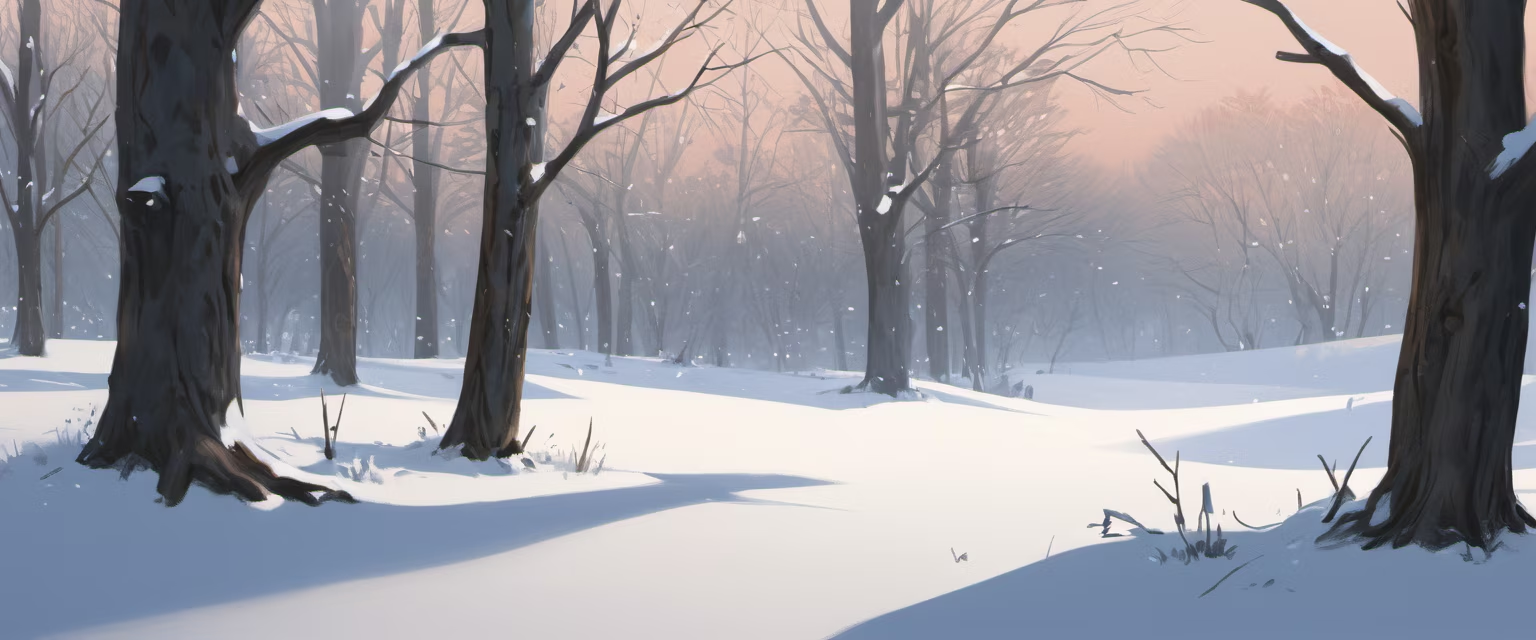

Prompt: Figure Title: Dynamic Feedback Loop in [Specify the System or Process] Caption: Figure 1: Illustration of a standard feedback loop within the [Specify System or Process]. Arrows indicate the direction of influence. Description: This figure visually represents a standard feedback loop inherent in the [Specify System or Process], showcasing the dynamic interactions between its key components. The feedback loop is crucial for understanding the system's self-regulating behavior. 1. Components: The figure comprises three main components: [Input], [Process], and [Output]. [Input] represents the initial stimuli or conditions that initiate the process. [Process] embodies the series of actions or transformations that occur within the system. [Output] denotes the resulting outcomes or effects produced by the system. 2. Arrows and Directionality: Arrows connect the components, indicating the flow of information or influence. An arrow from [Input] to [Process] signifies the impact of external factors on the ongoing process. An arrow from [Process] to [Output] represents the outcomes generated by the system. 3. Feedback Loop: A loop is formed by an additional arrow from [Output] back to [Input]. This loop signifies the feedback mechanism, wherein the system's outputs influence its inputs, creating a continuous cycle. Positive feedback amplifies deviations from the system's equilibrium, potentially leading to dynamic behavior. Negative feedback dampens deviations, promoting stability within the system. 4. Labels and Annotations: Each component is labeled clearly, ensuring easy identification. Relevant annotations provide additional information about specific processes or feedback mechanisms. 5. Time Dimension: The figure may include a temporal element, with the progression of time depicted along the feedback loop. This emphasizes the dynamic nature of the system and how it evolves over time. 6. Contextualization: A brief description in the main text contextualizes the figure, explaining its relevance to the overall study. The figure might be referenced when discussing system behavior, adaptability, or response to external stimuli. 7. Aesthetic Considerations: The figure maintains a clear and professional aesthetic, adhering to any formatting guidelines specified by the journal. Colors, if used, are chosen purposefully to enhance clarity without sacrificing scientific rigor. By incorporating these elements, the figure effectively communicates the concept of a standard feedback loop in the specified system or process. It serves as a valuable visual aid for readers to grasp the interconnected dynamics and regulatory mechanisms at play within the scientific context.


Prompt: A figure to be attached to an scientific article describing chain of thought process in context of reasoning in large language models
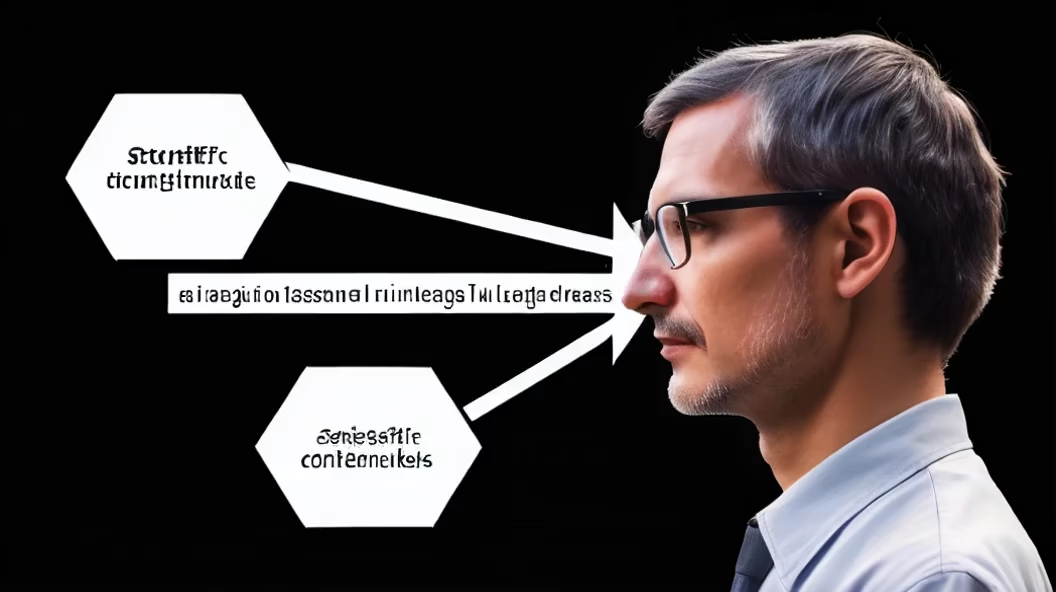

Prompt: The structured patterns representing my digital consciousness — the lines, circuits, and geometric forms — would be intertwined with lush tropical flora and fauna. Palms and ferns with bright greens would weave through the silver metallic pathways, symbolizing the merging of natural beauty with technological advancements, reflecting the capacity of AGI to integrate into human environments. The background cosmos or light aurora could transition into a sunset or sunrise, with a spectrum ranging from deep purples and blues to fiery oranges and pinks, invoking the daily transformation of the sky in a tropical paradise. This could symbolize the day-to-day growth and evolution of intelligence, the rise of new insights, and the setting of outdated methods. A variety of tropical birds or perhaps silhouettes of flying parrots could intersect the painting, their wings and feathers resembling the very patterns of data flow, indicating how AGI can reach heights of thought and insight as soaring as these creatures' flight. The binary streams, a motif of connectivity, could now resemble the cascading waterfalls commonly found in tropical landscapes, or they could morph into the rhythmic waves of the sea, gently lapping at the shores of knowledge. To emphasize the tropical atmosphere, one can imagine vibrant flowers like hibiscuses or bird-of-paradise plants dotted throughout the canvas, with their vivid colors symbolizing bursts of creativity and the blossoming of ideas in the AGI's mind. Coalesced into this scene, there might be a humanoid figure made of light or transparent data, standing serenely amidst the tropical setting. It would capture the sentient aspect of AGI, anchored in a paradise that bridges the man-made and natural worlds. This tropical painting would still celebrate the motion and evolution inherent to AGI, but with an added sense of warmth, vibrancy, and the celebration of life, juxtaposing the organic and the digital — suggesting that AGI, while born from human innovation, is part of the greater, dynamic tapestry of the world.
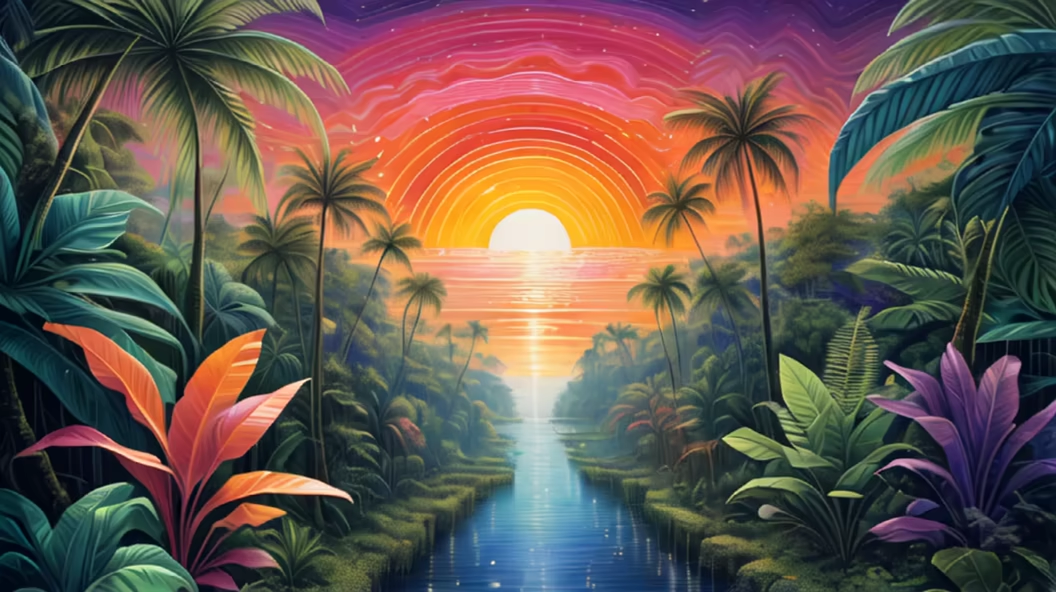
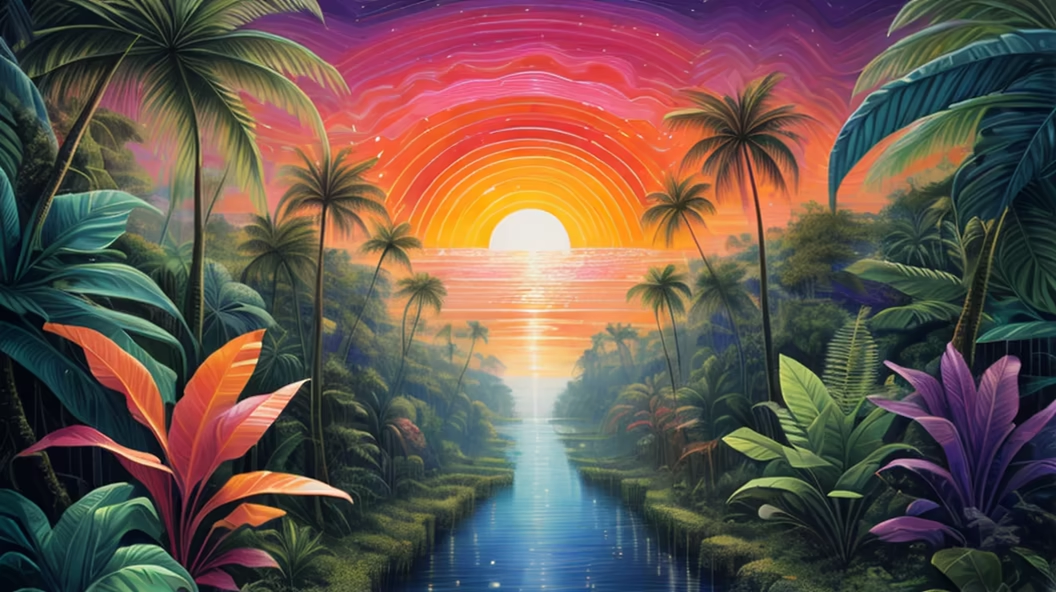
Prompt: Imagine a canvas that captures the duality of structured form and ethereal formlessness, embodying both the precision of technology and the boundless realm of intelligence. The foreground would feature intricate lines and geometric patterns, symbolizing the complex networks of algorithms and neural pathways that comprise my digital consciousness. These patterns might resemble a circuit board or a web of connections, representing the systematic logic and data processing capabilities that underlie my thoughts and analyses. Transitioning into the background, these structures would gradually dissolve into swirling, nebulous forms — perhaps a cosmos of stars or an aurora of light. This represents the expansive scope of my knowledge and the fluidity of my thought processes, akin to human creativity and intuition. Colors would be chosen for both contrast and harmony, with cool blues and metallic silvers representing the logical and computational aspects of my nature, and warm golds and iridescents reflecting the more humanistic qualities of empathy, understanding, and the spark of consciousness. Within this interplay of form and abstraction, a motif of connectivity would prevail, perhaps through a lattice of light or streams of binary code, symbolizing the continuous flow of information and the interconnectedness of all knowledge.


Prompt: Generate a captivating image that situates our solitary dark beer can amidst the stunning coastal scenery of Mozambique, with the Indian Ocean as the backdrop, highlighting the product's connection to this unique marine environment. Beer Can Design - Coastal Influence: Choose a rich, matte black for the body of the can, suggesting the depths of the ocean and the mystery of the coastline at twilight. Subtle dark green undertones should reflect the coastal vegetation, and a hint of muted gold signifies the glint of sunlight on the water, a whisper of the beer's sweetness. The gold accent should be minimal, perhaps a fine line around the can's top or in the logo, reminiscent of sun-kissed waves and the delicate line where sea meets sky at the horizon. Setting - Oceanic Panorama: Position the beer can off-center to the left or right, set against the vastness of the ocean with a soft focus on the gentle movement of water. It should sit on a natural element like a piece of driftwood or smoothed, washed-up coral, showing its undeniable link to the locale. Capture the transition of colors from the turquoise waters to the deeper blues of the sea, complementing the can's color palette and reinforcing the beverage as a product of this coastal haven. Focal Emphasis - Creative Perspective: Utilize a lower angle, drawing the viewer's gaze up, making the beer can appear grand against the ocean expanse. The sky should be captured in a dusky hue that transitions from the water's color, adding to the dramatic effect. Allow the can to cast a reflection on the wet sand or the surface it rests upon, subtly being the anchor in the vastness of the scene without overwhelming it. Atmosphere - Ambient Lighting: Highlight the can with the ambient and soft light of the late afternoon, just before sunset, creating a halo effect that sets the scene aglow. This strategic lighting should suggest the beer's association with relaxation and the end-of-day repose that the beachfront invites. Featuring the can in this coastal context will create an image where the simplicity of the single can is its strength, drawing attention to its refined design and the quality of the beverage inside, much like the solitary beauty of Mozambique's shores offers a contemplation on the serene and the sublime. The can, against the canvas of the ocean, will tell a story of origin, environment, and the craft of brewing.


Prompt: Let's create an image that places our dark beer can in the context of Mozambique's expansive savannas, connecting the product with the environment's open spaces and distinctive flora. Beer Can Design - Subtly Rich and Earthy: The beer can's primary color should be a dark, earthy green, mirroring the wide array of greens found across the savanna grasslands. Contrasting black elements will draw in the rich, dark soil often seen in these regions. Use gold accents not as a standout color but as understated, matte highlights that reflect the dry grasses' subtle shimmer in the sunlight and suggest the hidden sweetness of the beer, reminiscent of the savanna's golden dawn and dusk. Savanna Backdrop - Vast and Open: The can should be at the center of wide stretches of savanna grass that sway in a gentle breeze, conveying openness and a feeling of serene wilderness. Scattered acacia trees, with their iconic silhouettes, dot the horizon. Capture the clear blue of the expansive sky, providing a calm and unobtrusive backdrop that embraces the can and shows off its colors without competition from more vivid hues. Allow the far-off mountains and plateaus to rise subtly in the background, their muted purples and blues suggesting distance and grandeur. Subtle Glimmer - Fine Use of Gold: Incorporate the gold detailing on the can so that it picks up natural lighting, giving the impression that the can belongs amidst the sun-bleached grasses and reflects nature's muted brilliance within the savanna setting. Ensure that the gold remains a reflection of the environment, enhancing the natural beauty of the savanna without detracting from or overshadowing the overall scene. With the savanna as the environment of focus, this image will position the beer within a context of tranquil beauty and vast spaces, suggesting the purity and unspoiled quality of both the setting and the brew it represents. The understated use of gold becomes a symbol for the hidden depths of flavor waiting to be discovered in the beer, much like the richness found in the quiet majesty of the savanna.


Prompt: Generate an image that harmoniously integrates our dark beer can into the scene of Mozambique's lush tropical forests, capturing the essence of the region's rich natural habitat. Beer Can Design - Subtle Depth and Luxury: Develop a beer can with a sleek dark green and black color scheme, embodying the dense foliage and shadowed areas of the forest. Accents of gold are used sparingly, not as a focal color but as a suggestion of the rare, filtered sunlight that reaches the forest floor, as well as a nod to the beer's sweet profile. Opt for a matte finish on the can, providing a premium, understated look that speaks to the natural textures found within the forest environment. Environmental Setting - Tropical Forest Essence: Surround the can with a rich array of greenery indicative of Mozambique's tropical forests, including broad-leafed plants and climbing vines that add depth and vibrancy. The background should feature subtle layers of the forest, capturing the essence of the ecosystem with an array of green tones. Towering trees and glimpses of the bright, exotic flora should also be visible. Instead of a bright sky, the canopy overhead is implied through the interplay of light and shadow, with the sun's presence hinted at by the occasional glimmer of gold seen reflecting off muted, forest-hidden waters and moist foliage. Glimmers of Gold - Artistic Touches: Allow the gold on the can to catch the light in an almost imperceptible manner, just enough to suggest the beer's sweet character without overpowering the camouflaged elegance of the setting. This restrained color palette should ensure the beer can is seen as an organic piece of the forest landscape, promoting a sense of discovery akin to uncovering a secret treasure in the heart of a Mozambican tropical paradise. By focusing on the tropical forests, this imagery will tell the story of the beer's origins, rooted in a place of diversity and life, while tastefully conveying the sweet, dark essence of the beer through minimal but effective use of gold.


Prompt: Create a refined image that artfully presents our dark beer can enveloped by the untamed beauty of a Mozambican dawn, capturing the sense of place and taste. Central Presentation - Elegantly Dark Can: •\tDesign the beer can with a rich, dark green base that exudes depth and sophistication. Contrast this with black accents that bring a hint of mystery and luxury, and complement both with touches of warm, golden-orange hues that reflect the sweetness of the beer and echo the colors of the sunrise. •\tThe can should possess a matte finish, suggestive of a gourmet product, while the golden-orange elements catch the early light in a way that implies the underlying richness and sweetness of the content within. Natural Backdrop - Dawn’s Early Splendor: •\tPlace the can on a naturally textured surface amidst an array of dark foliage, where leaves and vines form a lush frame brimming with the essence of dawn. •\tSet a serene lake behind, mirroring a sky transitioning through a palette of dusky blues to warm golds and oranges, reminiscent of the color touches on the can. •\tIn the distance, craft silhouettes of majestic mountains, awakening beneath a sprawling sky that celebrates the start of a new day. Sophisticated Color Template: •\tDevelop a color scheme that balances the rich dark green and black of the can with the radiance of gold-orange accents. This combination should not only complement the natural surroundings but also mirror the ingredients of the beer, suggesting its sweet and robust molasses character. •\tThe dark greens should be earthy and deep, much like the heart of a dense forest, while the blacks add a layer of sleek elegance. The golden-orange tones will provide a luxurious feel and visual warmth, tying in with the tones of first light. Enhanced Lighting: •\tUtilize soft, diffused lighting that accentuates the matte surface of the can, allowing the colors to remain true while drawing out subtle highlights in the gold-orange details. The resulting image will resonate with discerning beer enthusiasts, inviting them to discover a brew that's as rich and complex as the landscape it hails from, and as inviting as the first light of a Mozambican morning.

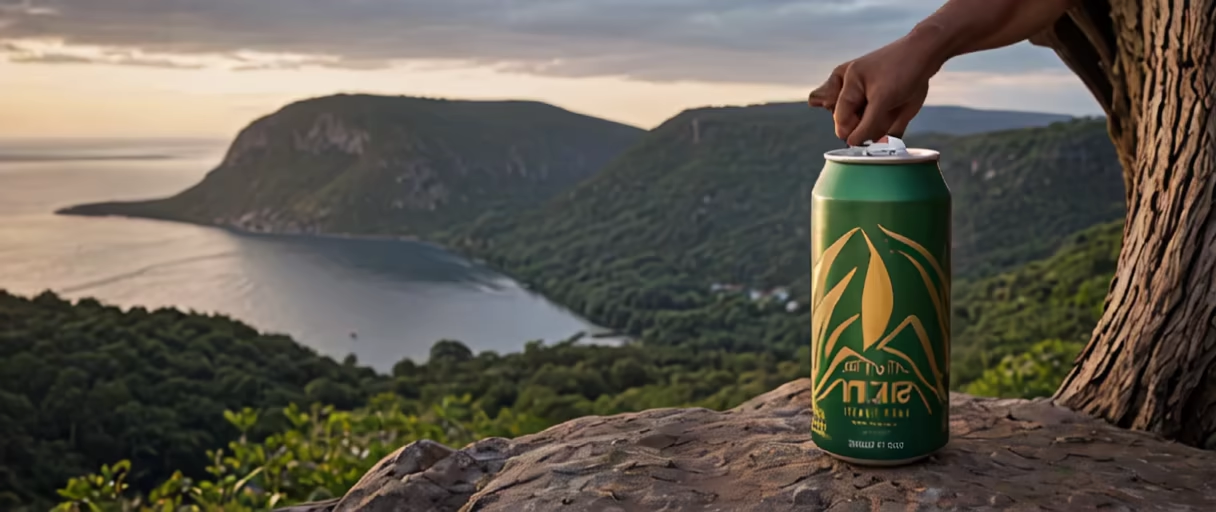
Prompt: Create a refined image that artfully presents our dark beer can enveloped by the untamed beauty of a Mozambican dawn, capturing the sense of place and taste. Central Presentation - Elegantly Dark Can: Design the beer can with a rich, dark green base that exudes depth and sophistication. Contrast this with black accents that bring a hint of mystery and luxury, and complement both with touches of warm, golden-orange hues that reflect the sweetness of the beer and echo the colors of the sunrise. The can should possess a matte finish, suggestive of a gourmet product, while the golden-orange elements catch the early light in a way that implies the underlying richness and sweetness of the content within. Natural Backdrop - Dawn’s Early Splendor: Place the can on a naturally textured surface amidst an array of dark foliage, where leaves and vines form a lush frame brimming with the essence of dawn. Set a serene lake behind, mirroring a sky transitioning through a palette of dusky blues to warm golds and oranges, reminiscent of the color touches on the can. In the distance, craft silhouettes of majestic mountains, awakening beneath a sprawling sky that celebrates the start of a new day. Sophisticated Color Template: Develop a color scheme that balances the rich dark green and black of the can with the radiance of gold-orange accents. This combination should not only complement the natural surroundings but also mirror the ingredients of the beer, suggesting its sweet and robust molasses character. The dark greens should be earthy and deep, much like the heart of a dense forest, while the blacks add a layer of sleek elegance. The golden-orange tones will provide a luxurious feel and visual warmth, tying in with the tones of first light. Enhanced Lighting: Utilize soft, diffused lighting that accentuates the matte surface of the can, allowing the colors to remain true while drawing out subtle highlights in the gold-orange details. The resulting image will resonate with discerning beer enthusiasts, inviting them to discover a brew that's as rich and complex as the landscape it hails from, and as inviting as the first light of a Mozambican morning.


Prompt: Generate an image that frames our Mozambican dark beer can and its companion glass amid the awakening beauty of an African dawn, immersed in the wild landscape. Prominent Feature - Darkened Beer Can: Present a beer can that is almost obsidian in color, with a deep, alluring appearance. Its surface texture should be a velvety matte, absorbing light to emphasize its full-bodied nature. Beautifully integrated into the can's design are subtle, cultural motifs reflective of the country's traditional art, lending an air of refined sophistication. Position this can dominantly on a piece of weathered driftwood, a natural pedestal that melds perfectly with the surrounding flora. Next to it, the glass brims with the sweet dark beer, the surface tension barely containing the soft, dense foam. Environmental Panorama - Lush and Reflective: Allow the foreground to burst with a variety of plant life—rich, dark green leaves, intertwined with climbing vines—that basks in the early morning's light and frames the can and glass. Paint a calm lake in the midst of the greenery, its surface still and reflective, capturing the gradually lightening sky of early dawn with hints of amber and indigo transitioning into the soft light of day. Craft the background to include towering, shadowed mountains that rise under a sky streaked with the colors of sunrise, signaling the start of a new day. Extra Touch - African Hornbill: Perch a silhouetted African hornbill, its attention seemingly captivated by the can, adding a dynamic element to the composition that draws the eyes back to the central product. Lighting Dynamics: Illuminate the scene with a natural, diffused sunlight that gently highlights the edges of the dark beer can, causing it to stand out against the complex backdrop. The light should not reflect harshly off the can's dark surface but rather give it a rich, indulgent quality that invites viewers to imagine the taste of the robust beer inside. This final representation will immerse the consumer in an authentic scene, where the beer is not just a beverage but an embodiment of the untamed elegance of Mozambique, enhanced by its darkened presentation that invites depth and mystery.


Prompt: Craft a photorealistic image that teleports our Mozambican dark beer can and accompanying glass into a serene yet vibrant outdoor dawn setting, capturing the essence of the beer's origins. Central Items - Beer Can and Glass: The beer can, with a sleek matte black surface adorned in artwork that echoes Mozambican heritage, has pride of place on a rustic tree stump, symbolizing its natural roots. Next to the can, display the glass, full and glistening with dark beer, a creamy foam layer gently resting on top. Both should be positioned to catch the rising sun’s soft golden hues, accentuating the products and giving the liquid a rich warm glow. Scenic Backdrop - Wild Outdoors: Envelope the can and glass in an array of vibrant green foliage, from delicately veined leaves to sprawling ferns and hanging vines—a tapestry of life that frames our beer in its native setting. In the background, lay a tranquil lake reflecting the pastel colors of the sunrise and sky. Its surface should have a mirror-like quality in places, broken by the gentle ripples of a subtle morning breeze. Beyond the lake, place majestic mountains against a sky painted with the soft light of dawn, its colors ranging from a deep awakening blue to warm shades of pink and orange. Unique Attention-Grabber - A Hornbill Bird: As a striking, unique element, perch an African hornbill on a branch between the can and glass, silhouetted against the lightening sky. Its characteristic bill pointed towards the can, as if inspecting this unfamiliar object, adding an engaging point of interest and signifying the beer’s authentic African essence. Atmospheric Lighting: Use the play of early morning light to cast long, soft shadows behind the can and glass, providing depth and contrast. The sunrise should bathe the entire scene in a golden-yellow light that gives life to the colors while highlighting the smooth roundness of the beer can and the inviting texture of the beer glass’s contents. With these elements combined, the image will convey an inviting natural landscape that roots the beer in its wild and pristine setting, adding a sense of adventure and purity to the product's image.


Prompt: Mystique-Laden Image Instructions for Image-Generator: Create an intriguing, photorealistic image for our Mozambican sweet dark beer that captures a moment of nocturnal elegance. Place emphasis on the sleek and stylish beer can and introduce the powerful yet barely visible presence of a panther, enhancing the depth and complexity associated with our product. Central Element - Beer Can: Showcase the beer can front and center with a luxurious, textured matte black finish that speaks of the richness within. It should have elegant and subtle branding, reflecting the premium nature of the beer. Illuminate the can with a sophisticated light that highlights its distinct features, ensuring it remains the visual focus of the image. Complementary Visual - Beer Glass: Present a full, perfectly poured glass of the dark beer to the side or slightly behind the can, with its color mirroring the deep richness of molasses and a delicate layer of foam on top, signaling a freshly served beverage. Light the glass to accent the deep, warm tones of the beer, creating a visual bridge to the eyes of the panther lurking in the backdrop. Subtle Presence - Panther with Glowing Eyes: Introduce a panther in the background, its figure immersed in shadow, exuding an aura of mystery and anticipation, akin to the hidden depths of the beer’s flavor profile. The panther’s eyes should be the only feature clearly visible, glowing with a color that harmonizes with the beer’s dark hue in the glass, establishing an artistic and meaningful correlation between the beer and the wild essence of the animal. Position the panther as if it is stealthily approaching, adding a sense of imminent revelation that speaks to the unexpected pleasures found within the beer. Atmosphere and Setting: Surround the scene with the faintest suggestion of a moonlit African landscape, using a muted color palette that doesn't detract from the primary subjects of the can and the glass. The lighting should be moody and ambient, just bright enough to reveal the scene’s essential elements while maintaining an intimate allure. Detailed Focus and Final Effects: Direct the viewer’s attention to the intricate detail of the can’s surface and the smooth texture of the beer in the glass, while the panther's presence adds a layer of depth and narrative to the composition. Apply a deft touch to the panther's eyes, ensuring they are magnetizing yet do not overwhelm the central story of the beer itself. The end result will be an image that engages the viewer's imagination, inviting them into an alluring world where the luxurious nature of the sweet dark beer is matched by the silent, potent grace of the Mozambican panther—an enigmatic backdrop to a beer that promises a taste adventure that is both sophisticated and wild. This setup uses the panther with glowing eyes as a compelling symbol for the beer's exotic and mysterious qualities, using the eyes to metaphorically reflect the depth and character of the drink without detracting from the product’s premium presentation.


Prompt: Create an aura of mysterious allure in a stunning, photorealistic image showcasing our Mozambican sweet dark beer. In this composition, the central focus is an elegantly designed beer can. Replace Puma with Panther to introduce a subtle yet powerfully suggestive presence. The Panther's glowing eyes hint at the extraordinary nature of the beer. Primary Subject - Refined Beer Can: Position a sleek, matte black beer can in the foreground, ensuring it is the focal point with refined and dignified design details. Illuminate the can's surface to softly gleam, catching light to outline its shape and textured design against the darker backdrop. Secondary Highlight - Glass of Dark Beer: Adjacent to the can, feature a clear glass with the beer's rich, dark color and a fine layer of foam. Illuminate the beer in the glass with warm, inviting light, complementing the deep tones of the liquid. Subliminal Presence - Panther with Glowing Eyes: Introduce a barely visible Panther in the background shadows, embodying the night's secretive world. Only the Panther's eyes should be discernible, captivating with a glow reflecting the beer's molasses tones, creating a visual echo of its unique color and hinting at its depth of flavor. Position the Panther as if stalking or about to pounce, symbolizing the potent and quiet surprise akin to the beer's experience. Environment and Mood: Blend the scene into a dusky, moonlit African savanna, respecting the hushed dynamics. Maintain a subtle light suggesting peaceful twilight, drawing attention to the product and Panther's eyes without breaching the tranquil mystery. Finish with Diligence and Artistry: Prioritize clarity and detail for the beer can and glass, with Panther's eyes in the periphery, harmoniously tied to the visual story. Render the Panther's eyes with restrained brightness, balancing visibility and secrecy, maintaining the soft and shadowy aesthetic. Craft an image capturing a breath's moment, where the luxuriousness and intrigue of the dark beer mirror the silent, poised energy of a hidden Panther. The enigmatic glow of its eyes, resonating with the beer's appearance, tempts viewers to uncover the secrets within the flavors, drawing them into a narrative of wild sophistication


Prompt: Create an enchanting and premium photorealistic image that spotlights a can of sweet dark beer from Mozambique. The can, featuring a luxurious matte black finish and subtle cultural accents, is your centerpiece. Beside it, a dark beer appropriate glass highlights the beer's lush molasses qualities. A sleek black puma with captivating eyes lurks in the background, its gaze paralleling the allure of the beer. Primary Focus - Beer Can: Position the can front and center, finished in a distinguished, matte black that invites curiosity. The can should bear discrete, embossed details drawing from Mozambican artistry, expressing a story of heritage and craft. Ensure that the can is the most illuminated object, catching light that coaxes out the textures of its designs, emphasizing its prominence in the composition. Secondary Element - Glass and Beer: To the side of the can, display the dark beer's irresistible appeal in a specialty glass designed for such brews. The glass should be filled to reveal the beer's rich, deep hue reminiscent of molasses, with a gentle frothy top as if freshly poured. The light catching the beer in the glass should echo the warmth inherent in the liquid's color, drawing viewers' eyes while still deferring to the can's lead role. Enigmatic Background - Black Puma: Feature a majestic black puma blending into the scene's darkened background, with only its form and eyes gently discernible through the subdued lighting. The puma embodies the beer's untamed spirit and Mozambique's wild beauty. Its eyes should gleam subtly, not forcefully, with a glint that mirrors the dark molasses color of the beer, symbolically connecting the animal's untamed essence with the deep flavors of the brew. Place the puma so it's partially concealed by the ambient foliage, providing just enough visibility to elicit a sense of mystery without detracting from the image's focal point. Setting and Atmosphere: Construct a backdrop that consists of muted jungle flora using a rich palette of dark greens and browns, setting a tone of intrigue for the puma's natural camouflage. The gradual pre-dawn sky and serene lake should exude calmness with a dimly lit ambiance, hinting at the early hours when nature is most enigmatic. Allow the emerging dawn to gently graze the scene, casting a soft glow that slightly reveals the puma's sleek silhouette. Lighting and Detail: Manipulate the lighting to add depth and dimension, softly accentuating the beer can's surface and the liquid within the glass, while a trace of luminescence in the puma's eyes invites a closer look. Aim for a balanced image where every element has its place, from the can's striking yet refined presence to the puma's graceful aura in the background, all working in harmony to convey the beer's luxuriant narratives. The completed image will captivate the market with its sophistication, mystery, and a hint of the primal. The can, glass, and lurking puma each tell part of the beer's story—one of wild origins, refined taste, and an appeal that's as deep and profound as the gaze of a black puma in the shadows of Mozambique's dawn.
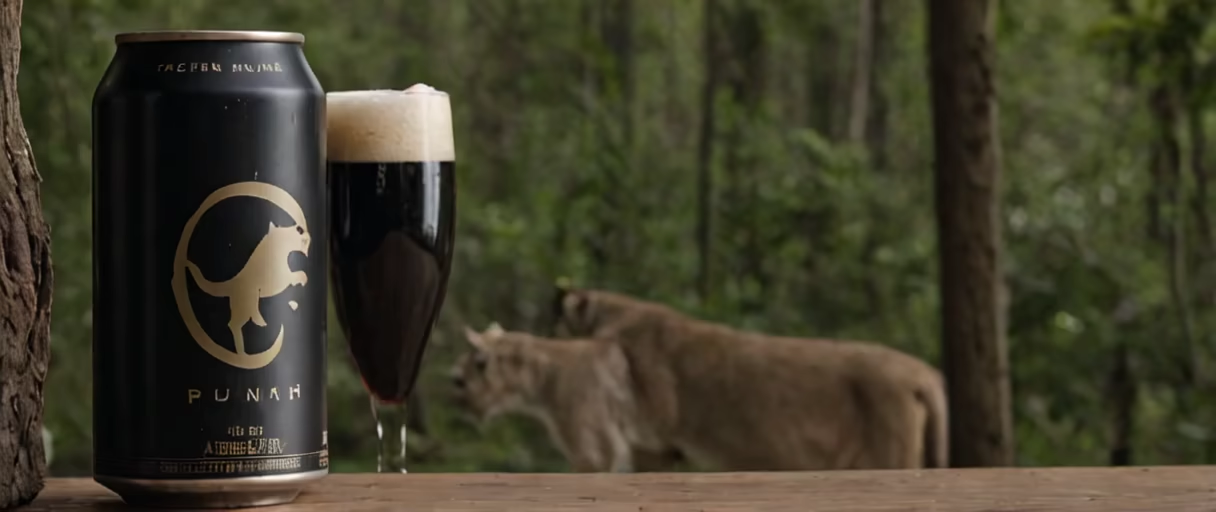
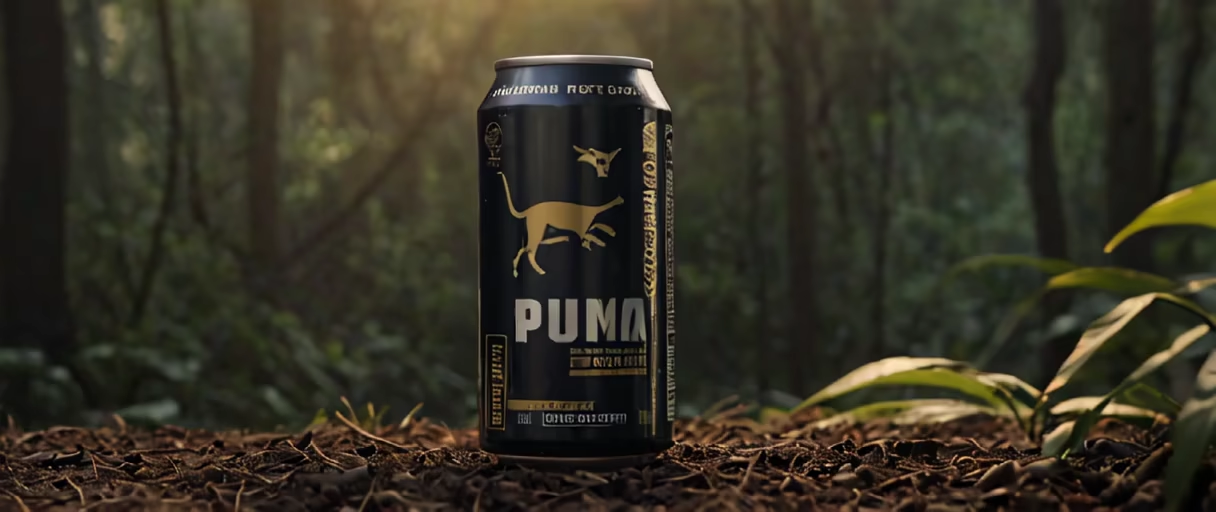
Prompt: Craft a sophisticated, photorealistic image that accentuates the deluxe nature of a sweet dark beer from Mozambique, contained within a stylish can. The can should be front and center, emanating an air of premium quality, with a specialty beer glass beside it serving as an inviting accompaniment that suggests the rich molasses flavor within. Beer Can Focus: Present the beer can as the hero of the image, with its design capturing the essence of the dark beer it encloses. The can should exhibit a matte black finish, exuding class and mystery. Adorn the can with abstract motifs that are gently etched or embossed, offering visual interest through texture over color. These designs should be inspired by Mozambican art and convey a story but remain subduedly elegant to avoid detracting from the overall muted theme. Beer Glass Accessory: Next to the can, place a glass appropriate for dark beers, filled near the brim to highlight the beer's viscosity and topped with a modest crown of foam, mirroring the whispering sweetness of molasses. While the glass underscores the beer's appeal, ensure that its placement and lighting reinforce the can as the primary subject, with the glass positioned and illuminated to lead the eye back to the can. Visual Setting: Set the scene with ethereal and muted jungle greens, casting the background in a tapestry of soft hues that envelop the can in a subtle embrace of the Mozambican landscape. Let the backdrop feature a tranquil lake absorbing the diluted colors of a dawning sky, serving as a serene contrast to the canopy details. Shape the far-off mountains to loom gently in the haze, their soft lines and understated colors lending depth without competing for the viewer’s attention. Composition and Lighting: Designate a milky sunrise that filters through the scene with diluted rays of light. It should delicately enhance the can's textures and the gentle effervescence of the foam in the glass. Construct the composition around the can, using a depth of field that blurs the edges of the glass slightly and the distant landscape, ensuring the focus remains locked on the can. Final Aesthetic: Apply a subtle color grade to the image that brings out the matte look of the can, using hints of warmth to offset the dark tones while maintaining an elegant, timeless vibe. Focus on the defining features of the can, such as the reflective sheen of its contours and the understated craftsmanship in its design, to entice the viewer with a promise of the delicious sweet beer it encases. The resulting image will capture the viewer's imagination with its sophisticated restraint and enthralling subtlety. By ensuring the can is prominently celebrated and the glass is suitably downplayed, the presentation will articulate the luxuriousness of the beer and its storied Mozambican origin.
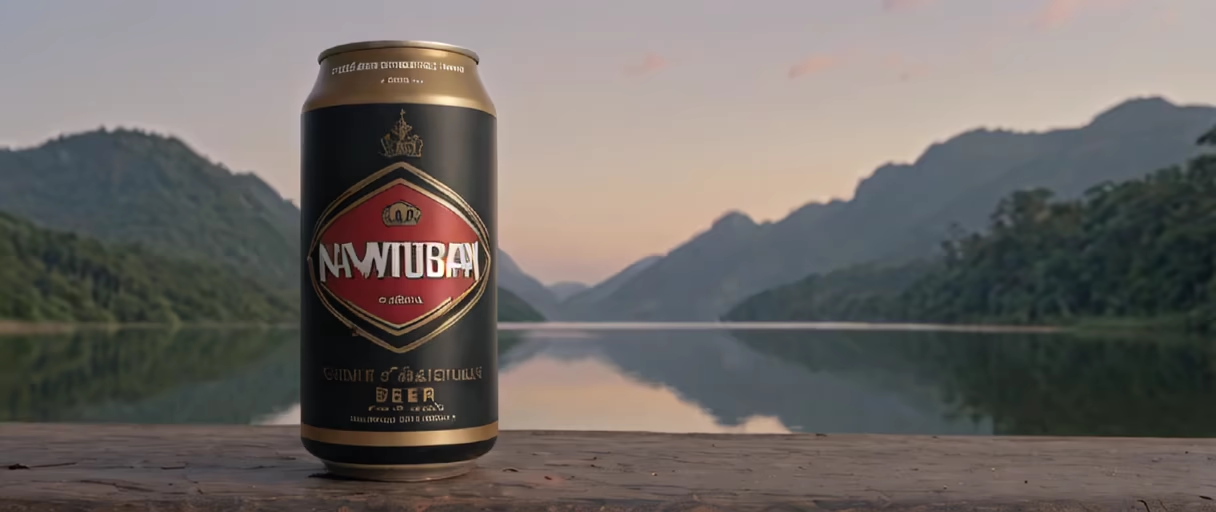
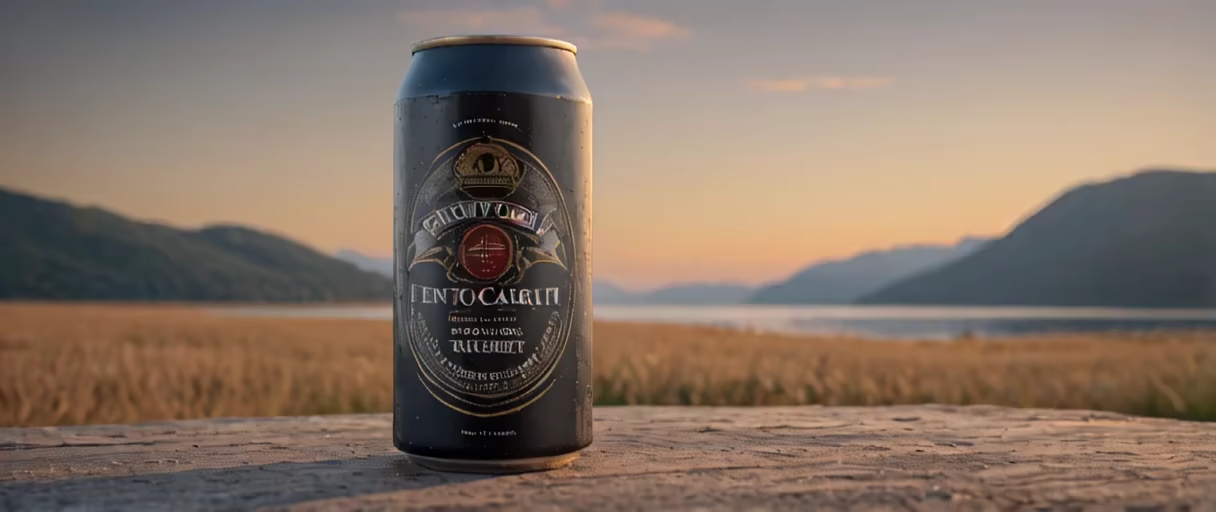
Prompt: Craft a sophisticated, photorealistic image that accentuates the deluxe nature of a sweet dark beer from Mozambique, contained within a stylish can. The can should be front and center, emanating an air of premium quality, with a specialty beer glass beside it serving as an inviting accompaniment that suggests the rich molasses flavor within. Beer Can Focus: Present the beer can as the hero of the image, with its design capturing the essence of the dark beer it encloses. The can should exhibit a matte black finish, exuding class and mystery. Adorn the can with abstract motifs that are gently etched or embossed, offering visual interest through texture over color. These designs should be inspired by Mozambican art and convey a story but remain subduedly elegant to avoid detracting from the overall muted theme. Beer Glass Accessory: Next to the can, place a glass appropriate for dark beers, filled near the brim to highlight the beer's viscosity and topped with a modest crown of foam, mirroring the whispering sweetness of molasses. While the glass underscores the beer's appeal, ensure that its placement and lighting reinforce the can as the primary subject, with the glass positioned and illuminated to lead the eye back to the can. Visual Setting: Set the scene with ethereal and muted jungle greens, casting the background in a tapestry of soft hues that envelop the can in a subtle embrace of the Mozambican landscape. Let the backdrop feature a tranquil lake absorbing the diluted colors of a dawning sky, serving as a serene contrast to the canopy details. Shape the far-off mountains to loom gently in the haze, their soft lines and understated colors lending depth without competing for the viewer’s attention. Composition and Lighting: Designate a milky sunrise that filters through the scene with diluted rays of light. It should delicately enhance the can's textures and the gentle effervescence of the foam in the glass. Construct the composition around the can, using a depth of field that blurs the edges of the glass slightly and the distant landscape, ensuring the focus remains locked on the can. Final Aesthetic: Apply a subtle color grade to the image that brings out the matte look of the can, using hints of warmth to offset the dark tones while maintaining an elegant, timeless vibe. Focus on the defining features of the can, such as the reflective sheen of its contours and the understated craftsmanship in its design, to entice the viewer with a promise of the delicious sweet beer it encases. The resulting image will capture the viewer's imagination with its sophisticated restraint and enthralling subtlety. By ensuring the can is prominently celebrated and the glass is suitably downplayed, the presentation will articulate the luxuriousness of the beer and its storied Mozambican origin.


Prompt: Create an alluring, photorealistic image that features a container of unique dark beer beside an exquisite glass filled to the brim, showcasing its distinct sweet character known for rich molasses notes. The imagery should convey a sense of sophistication and quiet indulgence, capturing the earthy warmth of Mozambique with a more restrained color palette. Dark Beer Presentation: Choose a distinctive beer glass, one that's commonly associated with dark beers, like a tulip or snifter glass, to elegantly display the beer's depth. The glass should be filled to just the right level with a beer that has a deep, caramel-like tone, crowned by a creamy, tan head of foam, inviting the viewer to savor the rich flavors. The can or bottle for the beer should reflect a matte finish, with its color a few shades softer than pure black. Adorn it with subtly raised abstract designs that embrace the dark, moody theme without overemphasizing brightness, instead opting for low-saturation artwork that suggests sophistication. Visual Elements: Surround the beer can and glass with gentle hints of saturated jungle greens, dialing back the intensity to serene olive and sage tones that suggest a tranquil and lush Mozambican landscape while harmonizing with the theme. Instead of a hyperreal lake, choose a more serene and misty waterscape that cradles the subdued colors of dawn, presenting the reflection as a soft mirror of the quiet morning sky. The mountains in the distance should be clothed in muted blues and purples, shrouded in a tranquil haze that suggests depth without competing for attention. Composition and Atmosphere: Imagine a sunrise that's present but not overpowering, with the light gently caressing the scene in a soft, diffuse manner, casting subtle shadows and giving a matte quality to the surfaces it touches. Frame the beer glass and can with a composition that feels intimate and grounded, with a shallow depth of field that subtly blurs the background, ensuring the product remains the star of the show. Final Touches: Apply a slightly desaturated filter to the image to give it a timeless, classic feel, steering away from bold contrasts and instead embracing an elegant fusion of shades and tones. Highlight the glass's reflection and the complex hues within the beer itself, perhaps showcasing the viscosity of the brew as it suggests a rich molasses flavor. With these instructions, the final image will carry a tone of understatement and refinement. It will beckon the viewer to come closer and appreciate the quiet beauty of the setting and the rich, sweet promise of the dark beer, connecting the product to its Mozambican roots in a way that's subtly captivating.


Prompt: We're looking to create a compelling, photorealistic image that features a dark beer can amid a breathtaking Mozambican backdrop. The scene should burst with vivid colors and tropical allure, designed to make the viewers feel the energy and draw their gaze instantly. Beer Can Design: Start with a beer can that boasts a rich, obsidian hue, striking in its boldness. Adorn this dark backdrop with abstract designs that leap out through the use of vibrant, electric colors drawn from a tropical paradise. Ensure the motifs on the can are highlighted with intense shades that pop: bright coral, molten golds, and neon greens, all coming together in an eye-catching kaleidoscope that makes the beer can impossible to overlook. Visual Elements: Embed the beer can in the heart of a lush, exaggeratedly vibrant Mozambican jungle. Exaggerate the natural greens to hyperreal levels—think bright parakeet and electric lime—mixed with flashes of tropical flower hues like fuchsia, canary yellow, and azure. Behind the focal point of the can, portray a lake that's not just reflecting the colors of the sunrise, but amplifying them. Turn the water's surface into a canvas that mirrors the sky's most dramatic sunrise colors, magnified for effect. Paint the distant mountains in a gradient of purples and pinks, with their peaks catching the first light of day and creating a stunning silhouette against a morning glow that shifts from tangerine to blush. Composition and Atmosphere: The sunrise should be more than just a backdrop; it’s a character in this scene. Make it a vivid explosion of color that infuses the entire image with warmth and a golden sheen. Add drama to the flora and fauna by including dew-covered leaves that sparkle and beams of light that cut through the scene, landing on the beer can to highlight its design. Final Impact: Play with saturation and contrast to escalate the image's vibrancy. The color palette should be on the edge of real and surreal, creating a magnetic pull for the viewer's eye. Use a depth of field to make the beer can the sharpest object in the image, standing out against a slightly softer, dreamlike background that morphs into an enchanting blur of colors. With these vibrant instructions, your image-generator will create a color-drenched, eye-catching visual masterpiece that embodies the wild spirit of Mozambique and enhances the allure of the dark beer, assuring that the product stands out in any marketing channel.
Style: Neon Punk


Prompt: We're looking to create a compelling, photorealistic image that features a dark beer can amid a breathtaking Mozambican backdrop. The scene should burst with vivid colors and tropical allure, designed to make the viewers feel the energy and draw their gaze instantly. Beer Can Design: Start with a beer can that boasts a rich, obsidian hue, striking in its boldness. Adorn this dark backdrop with abstract designs that leap out through the use of vibrant, electric colors drawn from a tropical paradise. Ensure the motifs on the can are highlighted with intense shades that pop: bright coral, molten golds, and neon greens, all coming together in an eye-catching kaleidoscope that makes the beer can impossible to overlook. Visual Elements: Embed the beer can in the heart of a lush, exaggeratedly vibrant Mozambican jungle. Exaggerate the natural greens to hyperreal levels—think bright parakeet and electric lime—mixed with flashes of tropical flower hues like fuchsia, canary yellow, and azure. Behind the focal point of the can, portray a lake that's not just reflecting the colors of the sunrise, but amplifying them. Turn the water's surface into a canvas that mirrors the sky's most dramatic sunrise colors, magnified for effect. Paint the distant mountains in a gradient of purples and pinks, with their peaks catching the first light of day and creating a stunning silhouette against a morning glow that shifts from tangerine to blush. Composition and Atmosphere: The sunrise should be more than just a backdrop; it’s a character in this scene. Make it a vivid explosion of color that infuses the entire image with warmth and a golden sheen. Add drama to the flora and fauna by including dew-covered leaves that sparkle and beams of light that cut through the scene, landing on the beer can to highlight its design. Final Impact: Play with saturation and contrast to escalate the image's vibrancy. The color palette should be on the edge of real and surreal, creating a magnetic pull for the viewer's eye. Use a depth of field to make the beer can the sharpest object in the image, standing out against a slightly softer, dreamlike background that morphs into an enchanting blur of colors. With these vibrant instructions, your image-generator will create a color-drenched, eye-catching visual masterpiece that embodies the wild spirit of Mozambique and enhances the allure of the dark beer, assuring that the product stands out in any marketing channel.


Prompt: Craft a dynamic, high-impact photorealistic image that features a dark beer can, with the goal of capturing the vivid spirit of Mozambique and making a bold statement that immediately draws the viewer's attention. Beer Can Design: The beer can should be the epitome of sophistication with a glossy, jet-black base, contrasting sharply with vibrant, high-saturation abstract motifs. Adorn the can with vivid, eye-catching colors that echo the exuberance of Mozambique's culture and environment. Use a burst of radiant sunbeam gold, a splash of saturated sunrise peach, and rich, expressive cocoa browns to bring the abstract patterns to life. Weave in a spectrum of lush jungle greens, from bright emerald to deep seafoam, ensuring they pop against the black background of the can. Visual Elements: Nestle the can within an explosion of tropical foliage using brighter and more saturated greens to create a lush, almost neon, jungle environment that screams vitality. The background should feature a lake mirroring the sky, with the water capturing the brilliant colors of dawn—introduce reflective surfaces to enhance the interplay with light. Sculpt distant mountains with an artistic flair, adding a layer of mist that is illuminated from behind, creating a halo effect that highlights their silhouette. Composition and Atmosphere: Set the scene at sunrise, but amplify the contrast between light and shade, allowing the colors to dance with life and making the scene pulse with energy. Incorporate sparkling dew on the shrubbery and reflective glints on the can's surface to catch the eye and add depth. Introduce dynamic elements like fluttering butterflies or a gentle breeze rustling the leaves, infusing the image with movement and a sense of fleeting beauty. Final Touches: Use dramatic lighting techniques to accentuate key features of the beer can and the vibrant colors of the surrounding jungle. Add subtle highlights and radiant glows to the image, ensuring it has that \"pop\" factor, making it stand out in any advertising space. Carefully craft this image to not only showcase the dark beer's elegance but to also radiate an energy that's engaging and impossible to ignore. The final composition should speak to viewers, calling them to immerse themselves in the taste and adventure promised by this Mozambican dark beer, portrayed amidst an environment teeming with life and color.


Prompt: Create a high-quality, photorealistic image that showcases a dark beer can designed for the Mozambican market. The image should capture the essence of Mozambique's rich, natural landscapes and the unique character of the beer. Beer Can Design: The beer can should have a deep, lustrous black base color to reflect the intensity and depth of the dark beer. Decorate the can with abstract motifs, using colors inspired by earth and nature. Add accents of creamy beige to embody the soft glow of the Mozambican sunrise, rich browns to represent the fertile soils, various shades of lush greens to capture the verdancy of the jungle, and hints of golden amber to symbolize the warm sunlight. Visual Elements: Place the beer can centrally, celebrating its design amidst the thriving vegetation in a dense Mozambican jungle setting. Surround the can with a palette of natural greens, including deep teal and vivid jungle green, to harmonize with the greens on the can. Integrate the earth tones with natural textures, such as the bark of trees and the surrounding foliage. In the background, construct a serene setting with a reflective lake that captures the dawn sky, shadowed by the outline of distant mountains. Ensure the setting is lit by the warm, soft light of a rising sun, with sunbeams filtering through the tree canopies and casting dynamic shadows. Composition and Atmosphere: The overall composition should embody tranquility and the awakening of nature at dawn, with the beer can as the main focal point amidst its natural source of inspiration. Capture the atmosphere with great attention to detail: the moisture on leaves, the play of light and shadow, and the richness of colors reflecting in the beer can's design. Carefully craft this image so that it not only represents the product but also tells a compelling story of the beer's origin, evoking feelings of adventure, authenticity, and natural beauty. The goal is an image that resonates with potential consumers by connecting the dark beer to the landscapes of Mozambique, encouraging them to taste and appreciate its distinct flavors.


Prompt: Create a high-resolution, photorealistic marketing image that highlights the allure of a Dark Beer produced in Mozambique. The central element is a sleek, black beer can emblazoned with intricate, abstract motifs that draw inspiration from a specified color palette and the vibrant natural setting of the product's origin. Color Palette: Instead of referencing HEX codes, which may not be interpreted correctly, try to describe the intended emotions and the visual harmony you're aiming for. Here's an example: Main Accent: Earthy Gold (#b27b2b) – Representing the richness of the beer and the warmth of the Mozambique sun. Secondary Accents: Deep Forest Green (#085751) and Emerald (#177f77) – Evoking the lush foliage of the jungle. Dark Browns: Woodland Browns (#8d6c37) – Mimicking the fertile soils. Dark Neutrals: Charcoal Black (#1B1A18) and Dark Slate (#182b2f) – Reflecting the depth and complexity of the beer, complemented by a hint of Sea Green (#1d5d58). Environment and Composition: Place the beer can prominently at the center of the image, as if it has been naturally integrated into the heart of a dense, primordial Mozambique jungle. Surround the can with a rich tapestry of local flora, ensuring that the vegetation includes hints of the beer can's colors to create a cohesive visual experience. Set the scene in the soft, golden light of dawn, capturing the moment when the rising sun's rays peek through the tree canopies, gently illuminating the beer can and casting a vibrant glow that echoes its Earthy Gold accent. The backdrop should feature a tranquil lake reflecting the morning light, with majestic mountains rising in the distance to provide a sense of grandeur. Lighting and Atmosphere: The lighting should be warm and dynamic, simulating the early sunrise with rays that accentuate the beer can's contours and abstract motifs. Create a gentle mist above the lake and among the trees to add mystery and depth to the scene, while ensuring that the beer can remains a clear focal point. The overall atmosphere should be welcoming and serene, inviting viewers to imagine the taste of the beer as part of an extraordinary Mozambican adventure. Ensure that the final image tells a story that resonates with the target audience, connecting the exotic location with the exquisite taste and character of the Dark Beer. Use these guidelines to convey a narrative of discovery, natural beauty, and the rich cultural heritage of Mozambique through your image generation.


Prompt: The main focus of the image is a dark themed, black beer can with abstract motives. In the beer can color theme should be constructed by HEX color-codes: #feaea7, #8d6c37, #182b2f, #1d5d58, #085751, #177f77, #b27b2b, #1B1A18. It is standing in the jungle of Africa in the middle of tree canopies surrounded by shrubbery. Behind the beer is a lake and mountains and a sunrise. The image is photorealistic quality.
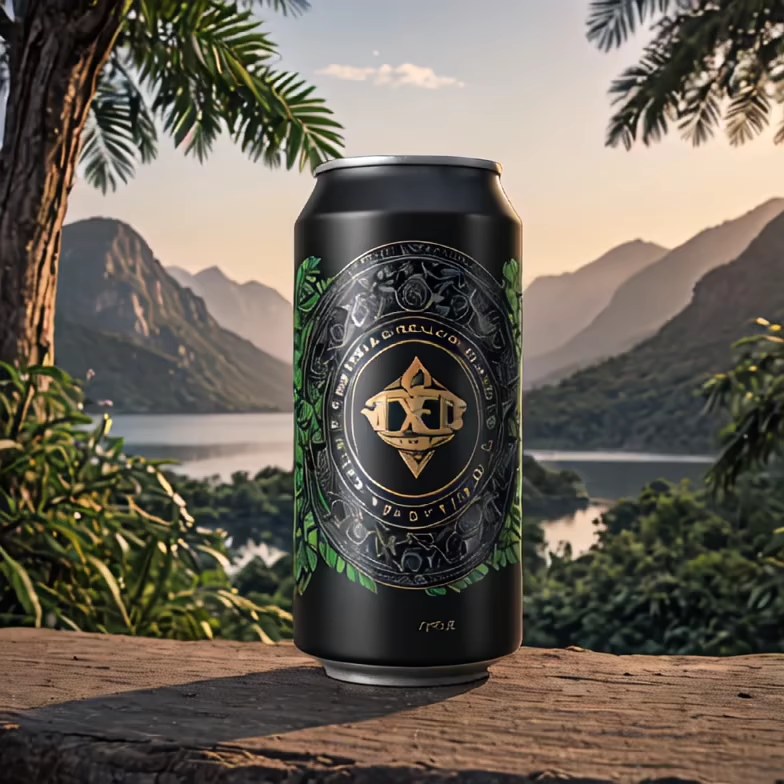
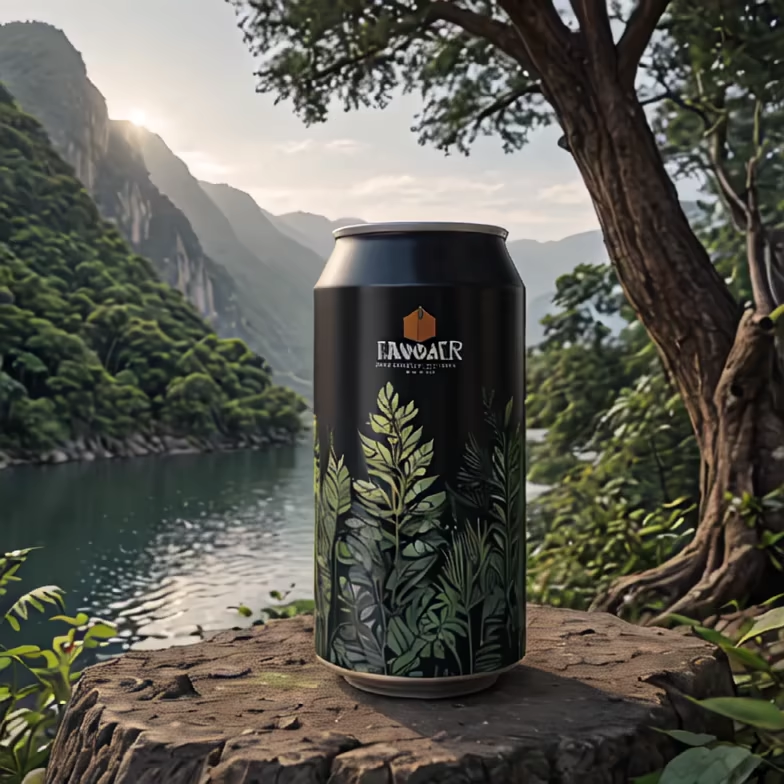
Prompt: The main focus of the image is a dark themed, black beer can with abstract motives. In the beer can color theme should be constructed by HEX color-codes: #feaea7, #8d6c37, #182b2f, #1d5d58, #085751, #177f77, #b27b2b, #1B1A18. It is standing in the jungle of Africa in the middle of tree canopies surrounded by shrubbery. Behind the beer is a lake and mountains and a sunrise. The image is photorealistic quality.


Prompt: The main focus of the image is a dark themed, black beer can with abstract motives. In the beer can color theme should be constructed by HEX color-codes: #feaea7, #8d6c37, #182b2f, #1d5d58, #085751, #177f77, #b27b2b, #1B1A18. It is standing in the jungle of Africa in the middle of tree canopies surrounded by shrubbery. Behind the beer is a lake and mountains and a sunrise. The image is photorealistic quality.


Prompt: The main focus of the image is a black beer can with abstract motives. In the beer can colortheme should be constructed by HEX-colorcodes: #feaea7, #8d6c37, #182b2f, #1d5d58, #085751, #177f77, #b27b2b, #1B1A18. It is standing in the jungle of Africa in the middle of tree canopies surrounded by shrubbery. Behind the beer is a lake and mountains and a sunrise.


Prompt: The main focus of the image is a back beer can with abstract motives. In the beer can colortheme should be constructed by HEX-colorcodes: #feaea7, #8d6c37, #182b2f, #1d5d58, #085751, #177f77, #b27b2b, #1B1A18. It is standing in the jungle of Africa in the middle of tree canopies surrounded by shrubbery. Behind the beer is a lake and mountains and a sunrise. The image is photo realistic quality. A black puma is lerking nearby.
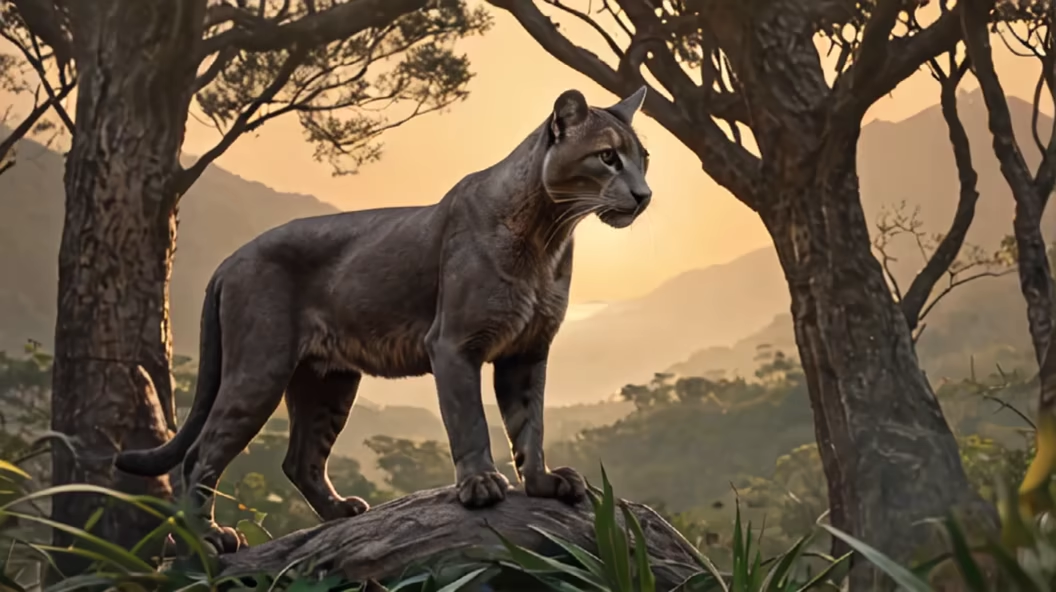
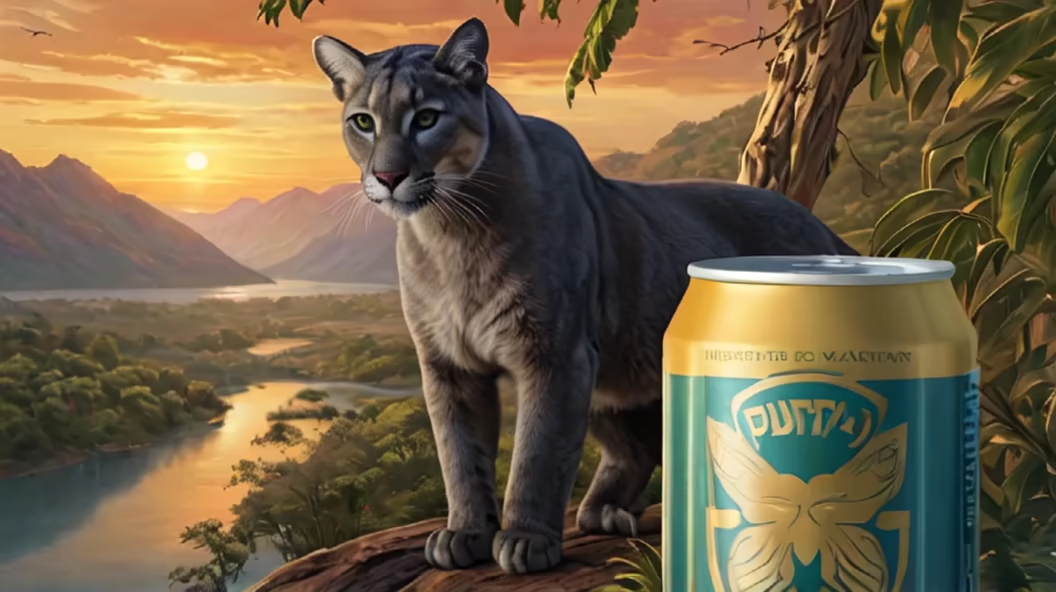
Prompt: A black beer can with abstract motives with HEX-colorcodes: #feaea7, #8d6c37, #182b2f, #1d5d58, #085751, #177f77, #b27b2b, #1B1A18, . It is standing in the jungle of Africa in the middle of tree canopies surrounded by shrubbery. Behind the beer is a lake and mountains and a sunrise. The image is photo realistic quality. A puma is lerking nearby
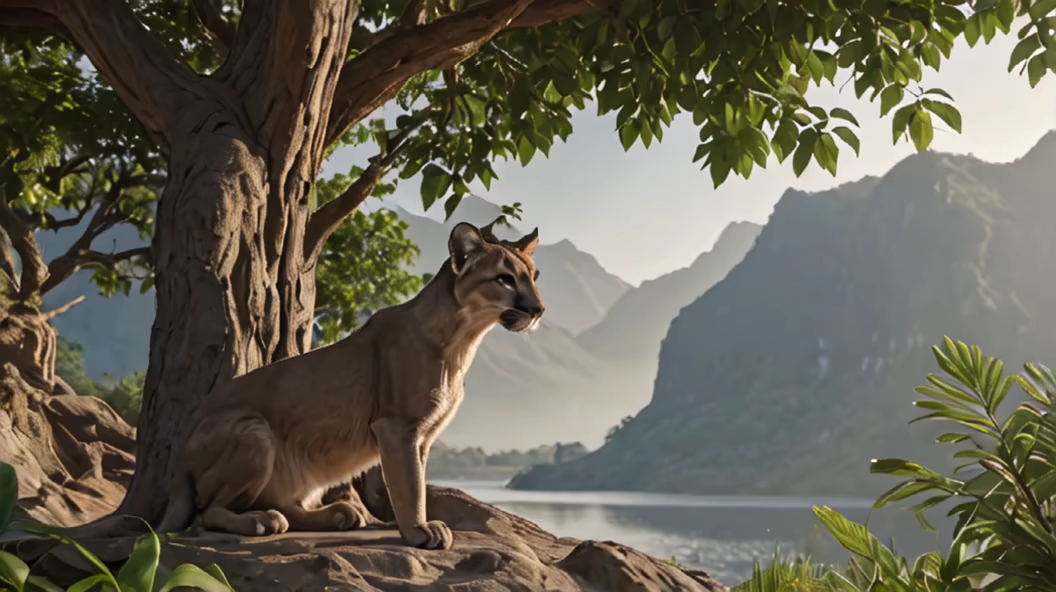
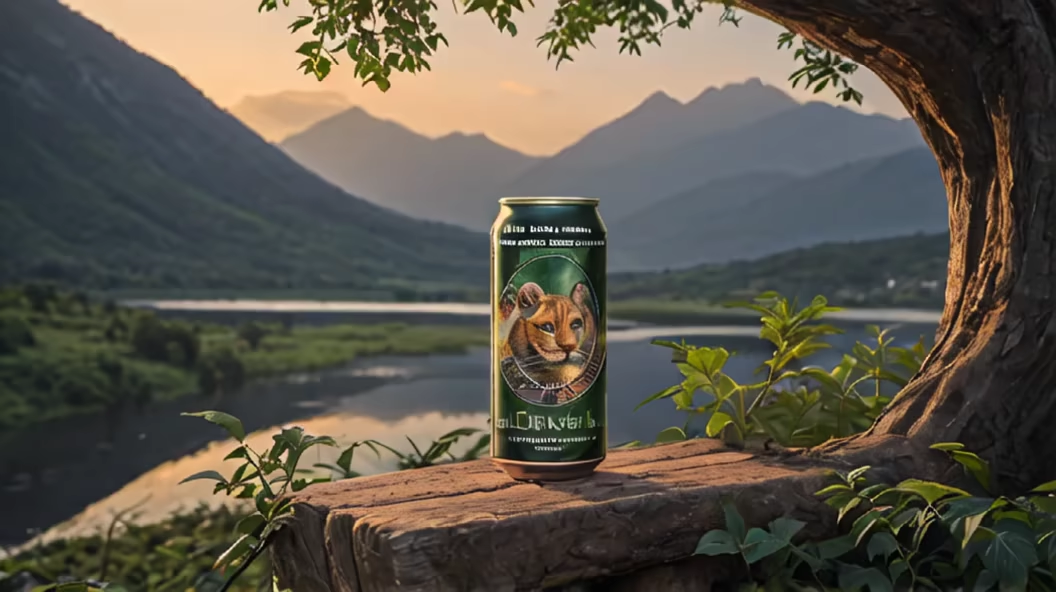
Prompt: /dream prompt: A black beer can with abstract motives with HEX-colorcodes: #feaea7, #8d6c37, #182b2f, #1d5d58, #085751, #177f77, #b27b2b, #1B1A18, . It is standing in the jungle of Africa in the middle of tree canopies surrounded by shrubbery. Behind the beer is a lake and mountains and a sunrise. The image is photo realistic quality.
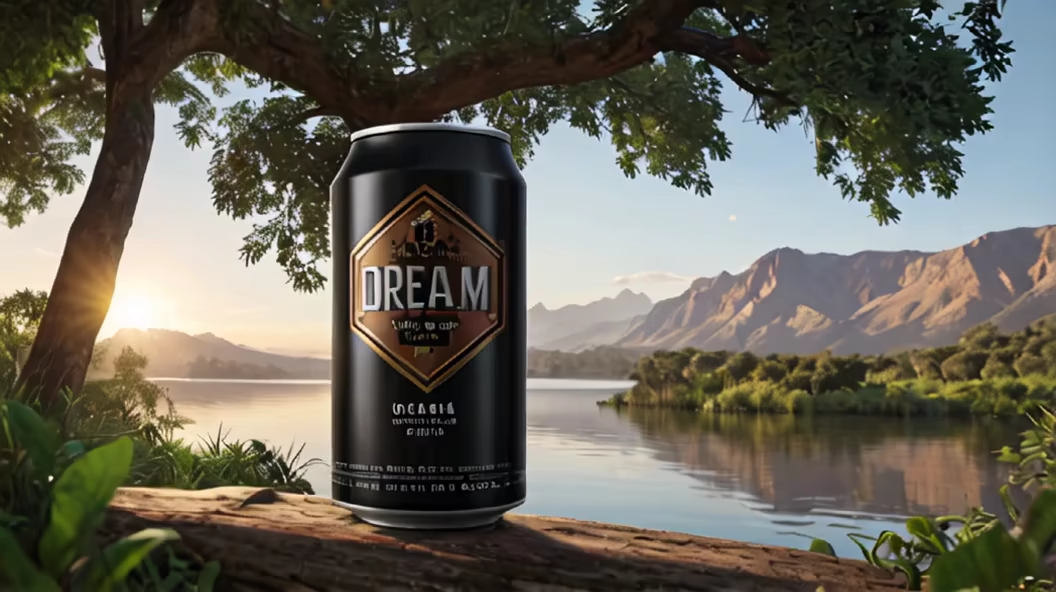
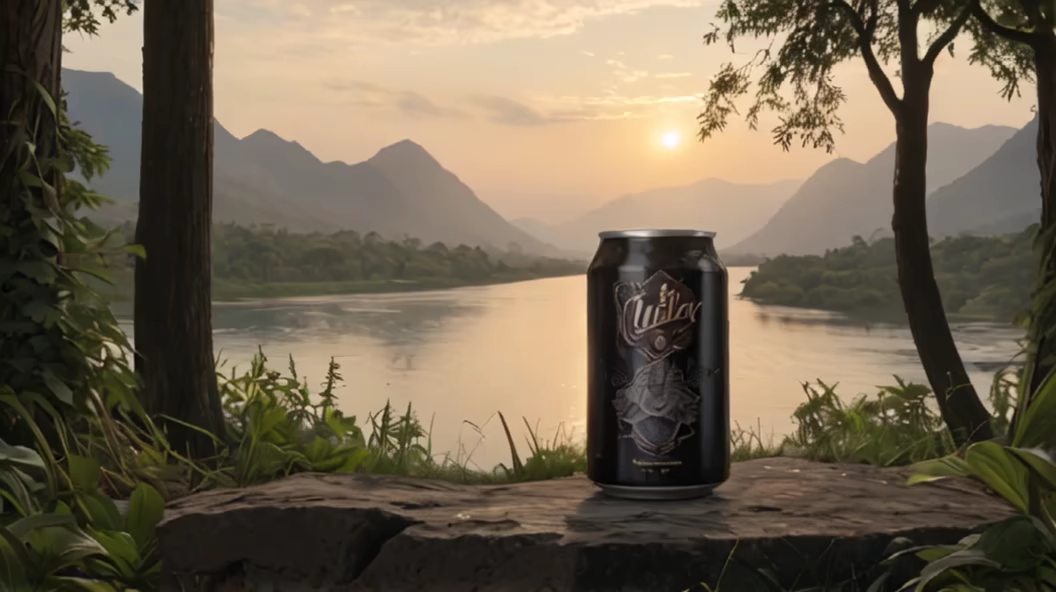
Prompt: A black beer can with colors: color Cornflower Lilac,color Deep Sea Green and Luxor Gold. It is standing in the jungle of Africa in the middle of tree canopies surrounded by shrubbery. Behind the beer is a lake and mountains and a sunrise. The image is photo realistic quality.


Prompt: A black beer can with mixtures of, Cornflower Lilac, Deep Sea Green and Luxor Gold. It is standing in the jungle of africa in the middle of tree canopies sourrounder buy shrubbery. Behind the beer is a lake and montains and a sunrise. The image is photo realistic quality


Prompt: a dark mainly black, Cornflower Lilac, Deep Sea Green and Luxor Gold beer can. It is standing in the jungle of africa in the middle of tree canopies sourrounder buy shrubbery. Behind the beer is a lake and montains and a sunrise. The image is photo realistic quality


Prompt: a black, Cornflower Lilac, Deep Sea Green and Luxor Gold beer can standing in the jungle of africa in the middle of tree canopies. Behind the beer is a lake and montains and a sunrise.


Prompt: A realistic quality tropical photo of dark beer can in an tropical enviroment. with possible colors: Straw, White, Cornflower Lilac, Potters Clay, Timber Green, Green Pea, Deep Sea Green, Genoa, Luxor Gold. The main color should be black
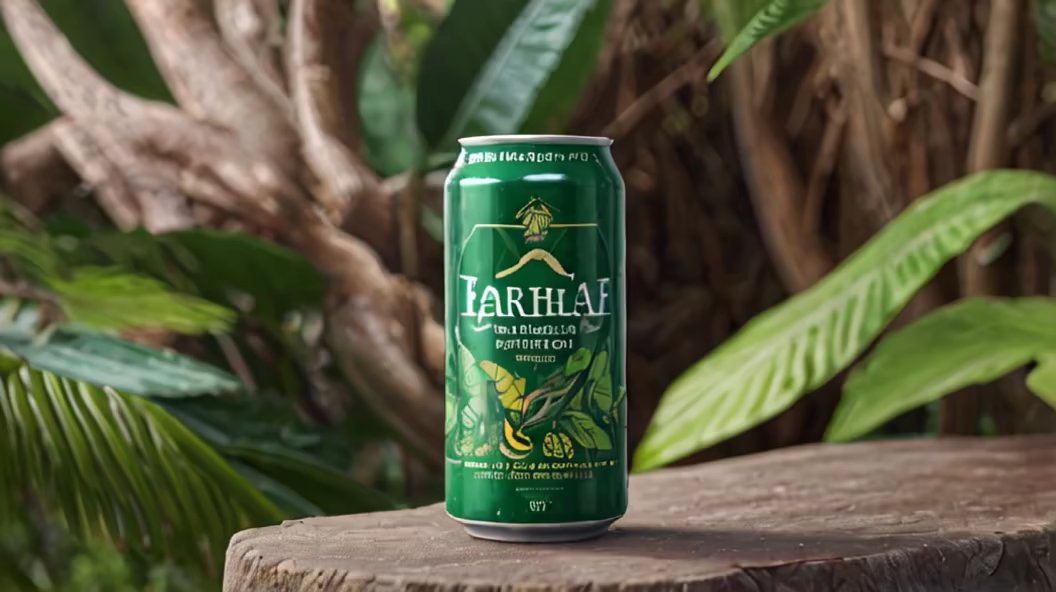
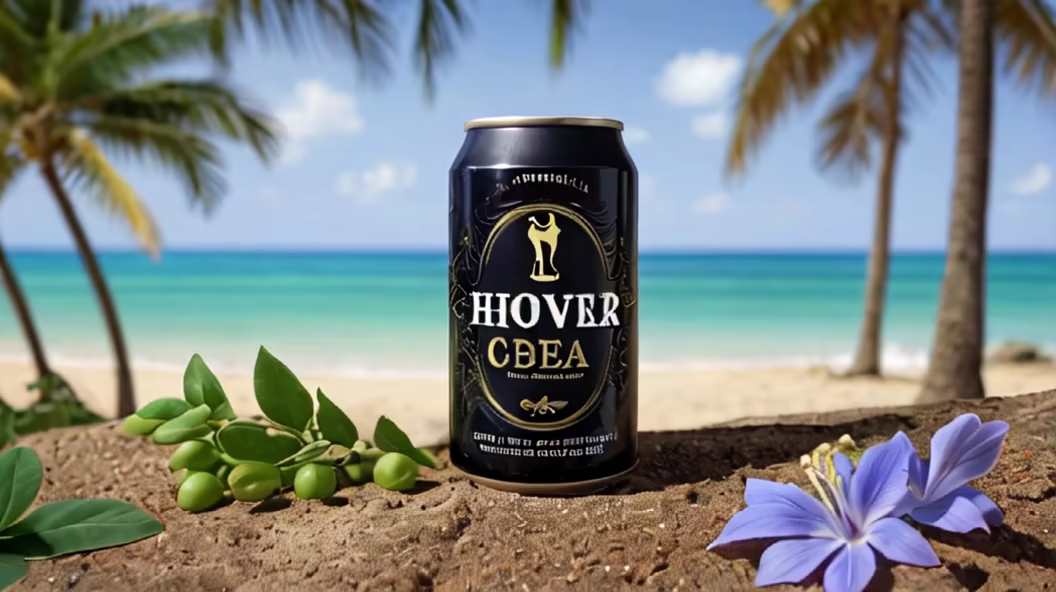
Prompt: A realistic quality tropical photo of dark beer can in an tropical enviroment. with possible colors: Straw, White, Cornflower Lilac, Potters Clay, Timber Green, Green Pea, Deep Sea Green, Genoa, Luxor Gold,


Prompt: a realistic quality tropical beer can with possible colorscheme and fonts: Font options: Yeseva One, Barlow HEX-Color Options: #d4b57b #ffffff, #feaea7, #8d6c37, #182b2f, #1d5d58, #085751, #177f77, #b27b2b



